NORWEGIAN SCENIC ROUTE RONDANE
– runs from Venabygdsfjellet to Folldal and Sollia Church to Enden. It has a total length of 75 km and is open to traffic throughout the year.
The route follows the road Fv27 – which is an essential gateway to the mountain area with its many hiking options.Most of the route goes through the elongated Atnedalen east of Rondane National park, and you can see the impressive Rondane mountain peaks, several over 2000 m asl.

I will include Ringebu as a stop even if the route starts north of this village. The Ringebu stave church is worth a visit.
MAIN SUBJECTS:
- RINGEBU STAVE CHURCH
- VENABYGDFJELLET
- SOLLIA CHURCH
- NORDRE BRÆND – with the cabin BORGEN where Hamsun wrote in Sollia
- ATNBRU AND ATNFOSSEN VANNBRUKMUSEUM
- SOHLBERGPLASSEN – REST AREA AND VIEWPOINT
- STRØMBU REST AREA AND VIEW POINT
RINGEBU STAVE CHURCH
Ringebu church is one of Norway’s biggest stave churches. It is a remarkable building – nestled in the hills and surrounded by nearby farmland. Luckily, it was open for visits, so I got to see the interior.
The oldest part of Ringebu church, the west end, is from the 13th century and built in a stave church style. The transept and tower are the reconstruction results in the 1630s by master builder Werner Olsen. The west doorway, carved in dragon style, dates from the Middle Ages.
The soapstone font is from the 12th century, the St. Lawrence statue from about 1250. The church also has two crucifixes from the Middle Ages.
The altarpiece is from 1686, and the pulpit is from 1703.
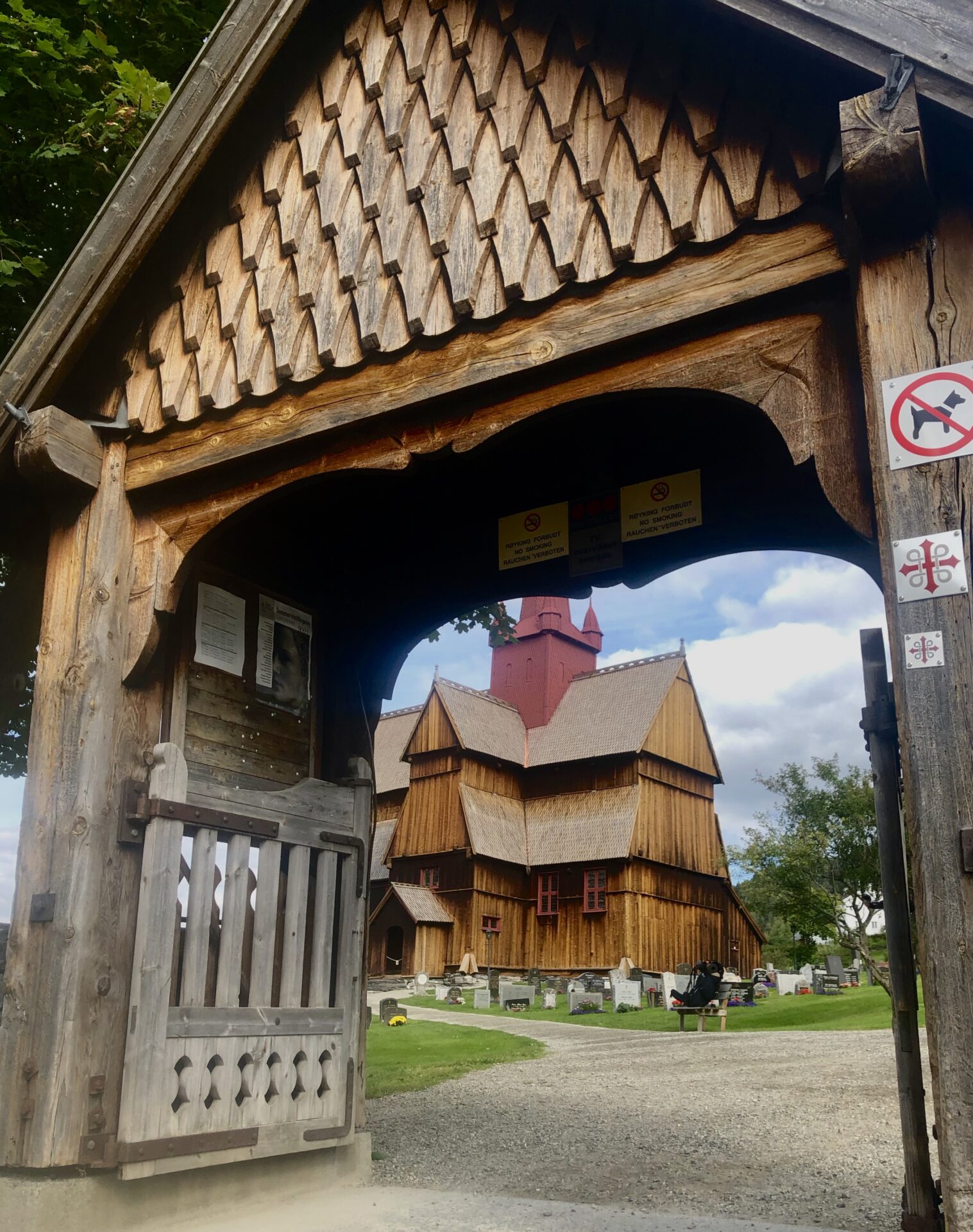
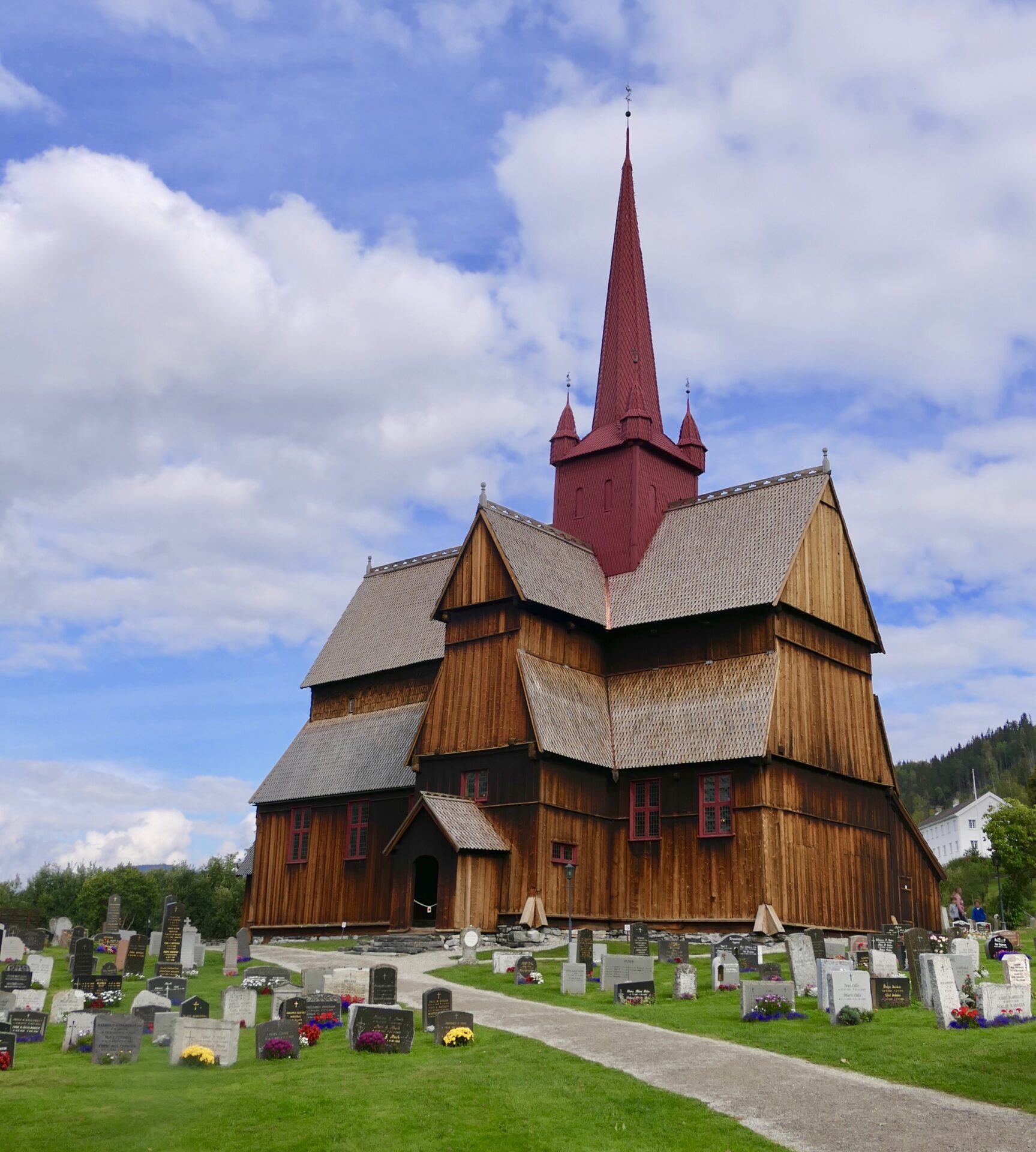
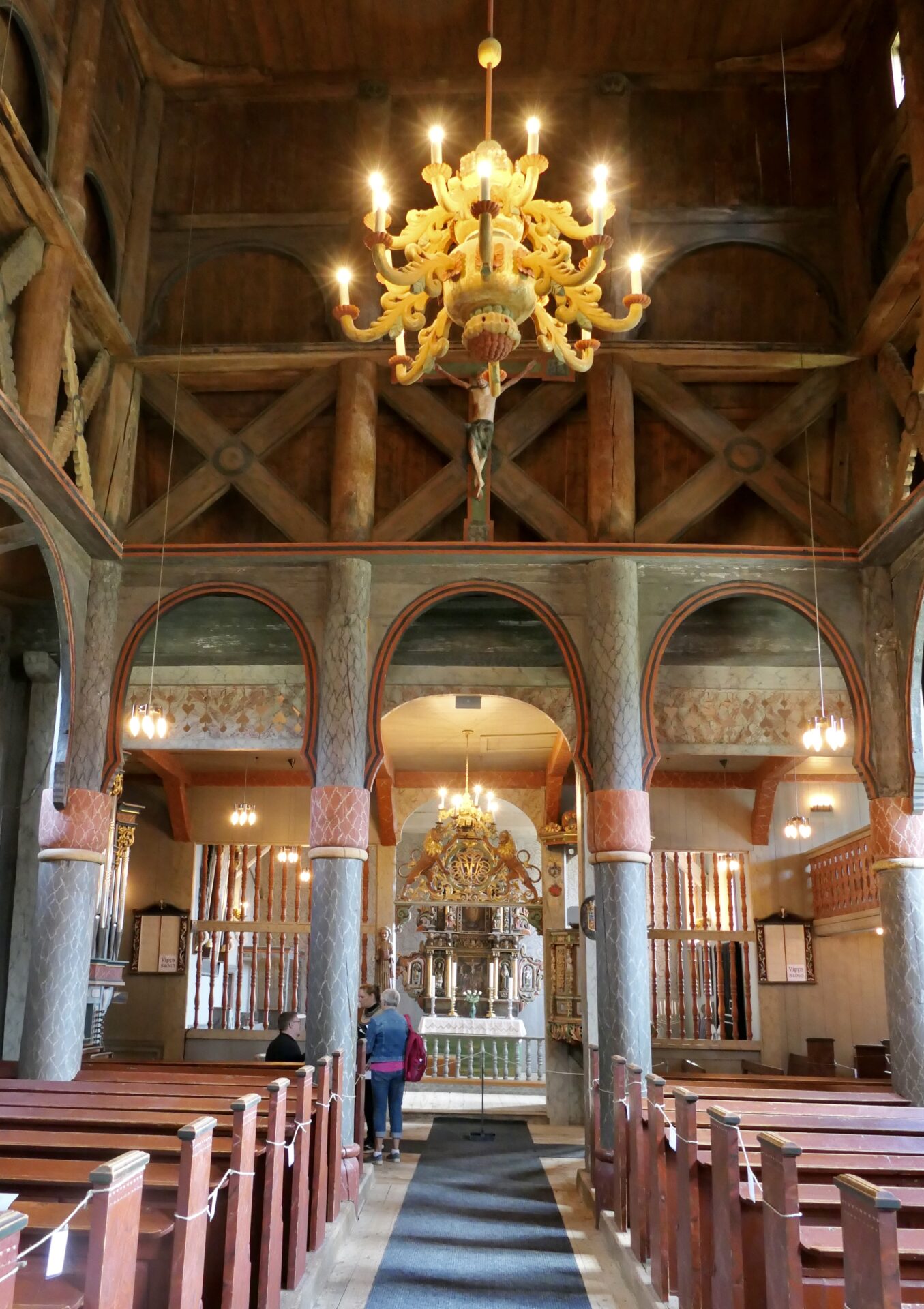
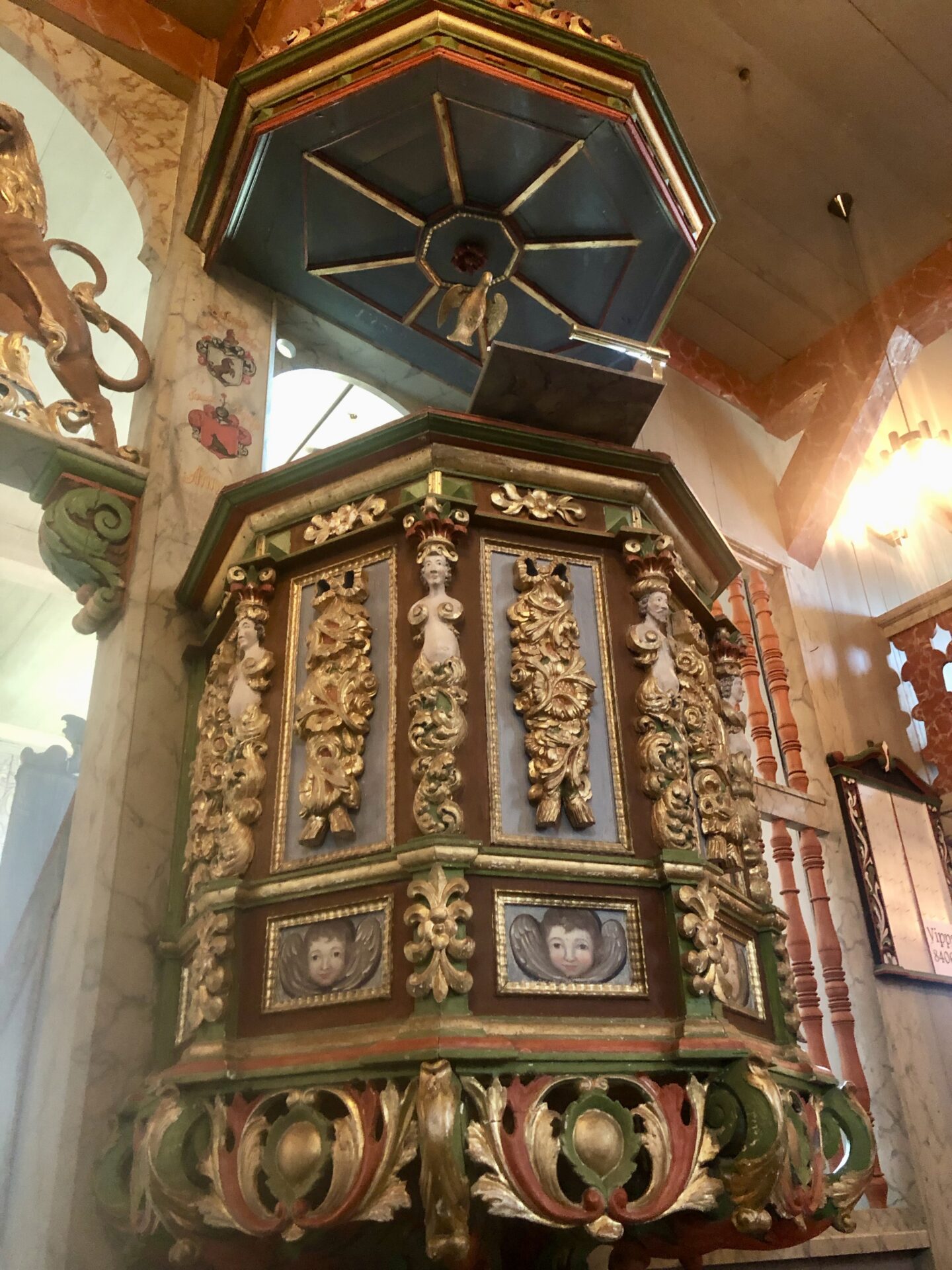
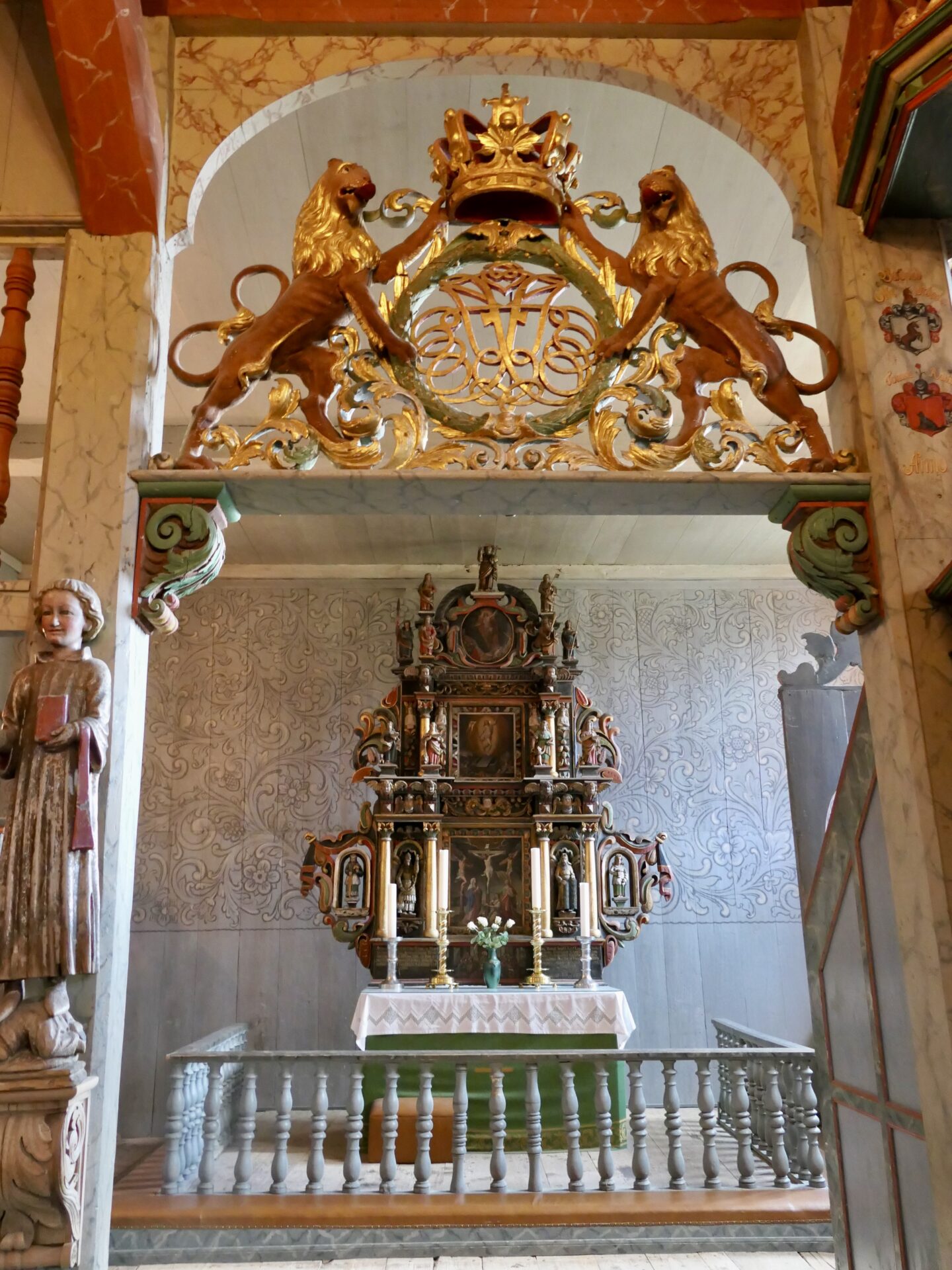
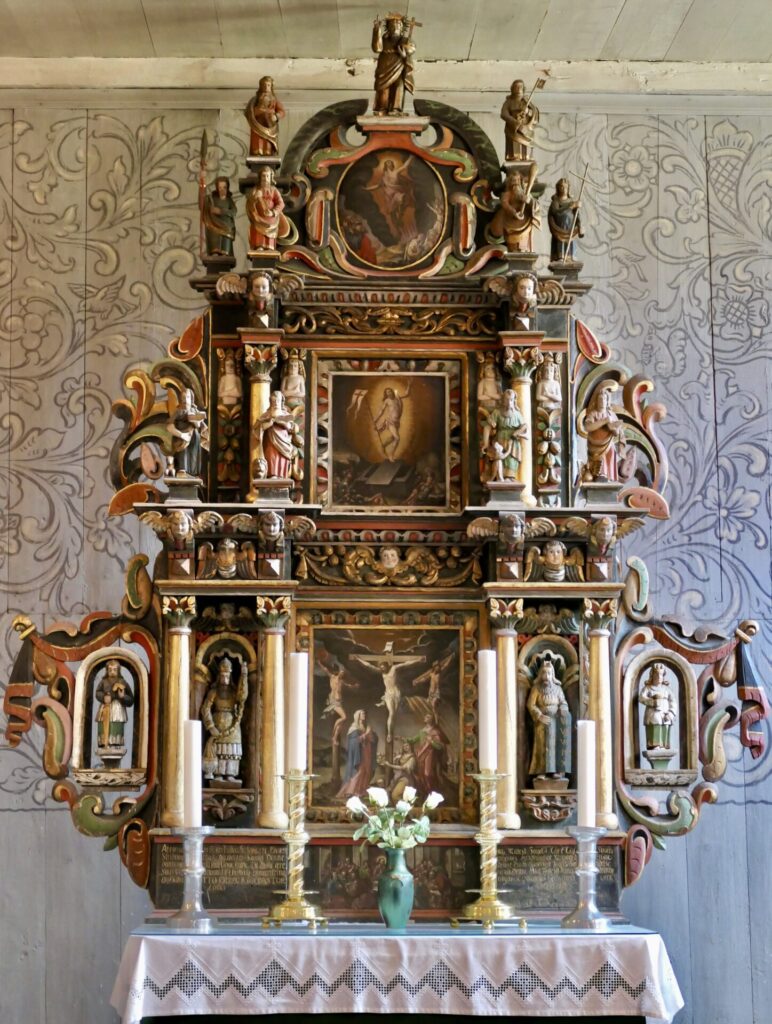
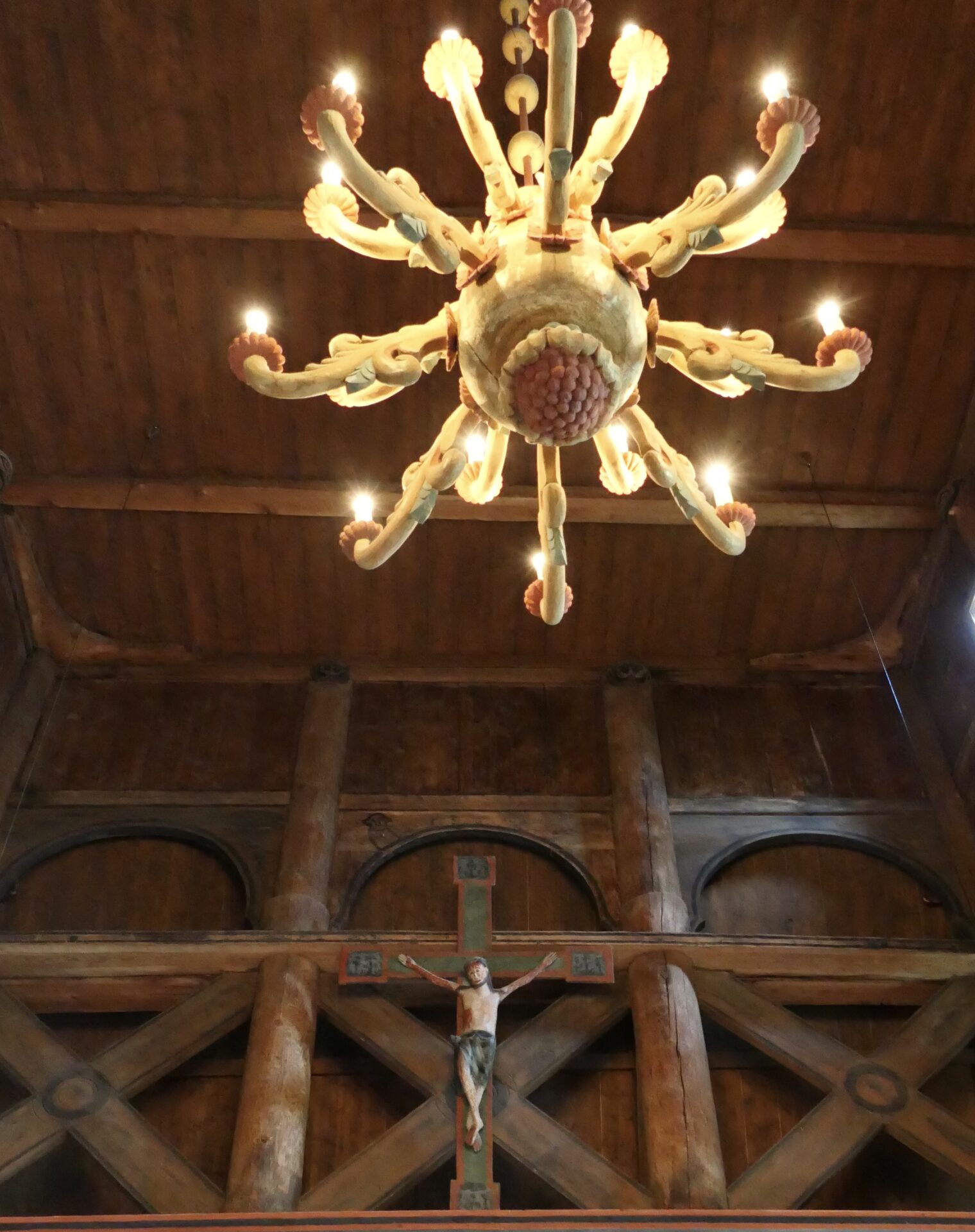
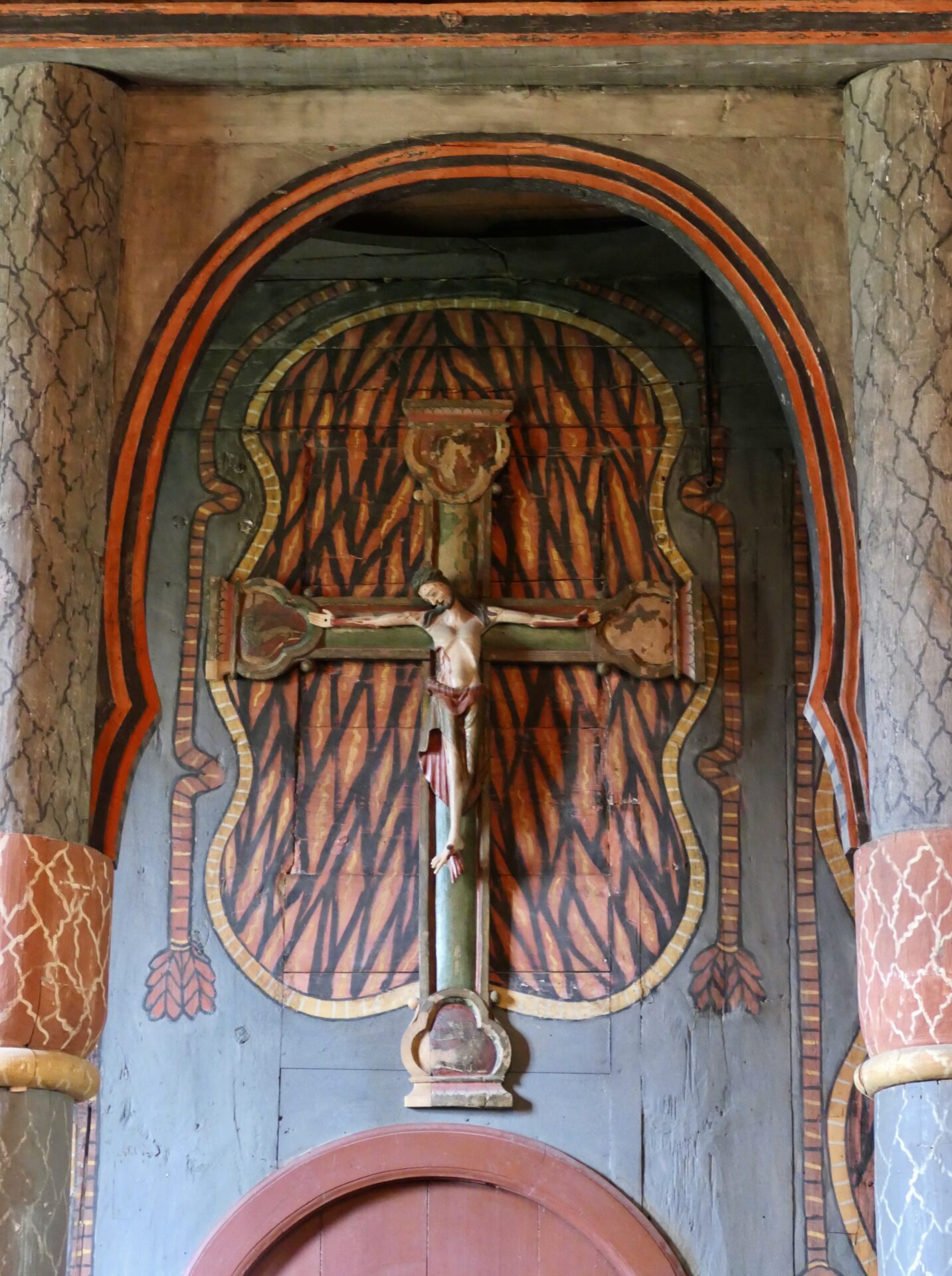
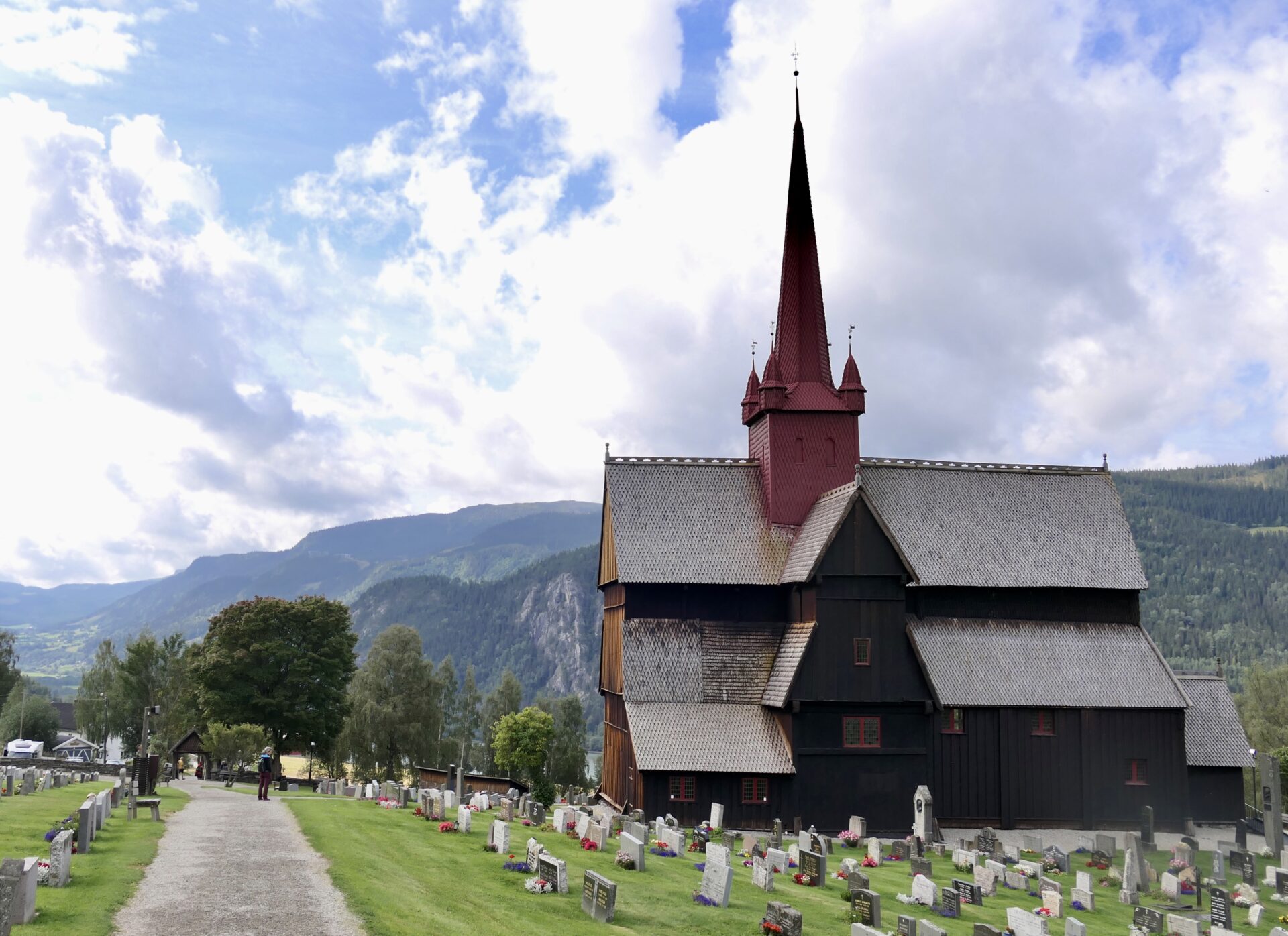
Archaeological excavation carried out in 1980–1981 uncovered signs of a pole church from the first period of Christianisation, properly from the middle of the 11th century. According to Snorre Sturlason’s “Heimskringla”, Christianity was introduced to Gudbrandsdalen in 1021 by King Olav Haraldson (995-1030)
892 coins were discovered under the floor. Many were from the time of Haakon Haakonson (1217-1263), while the rest were mainly German, Swedish and Danish coins.
THE SISTER BELLS
The story about the bells belonging to this stave church has inspired the Norwegian historical trilogy “The bell sisters” by the Norwegian author Lars Mytting. The Norwegian title is “Søsterklokkene.”
Here is the true story about these bells:
THE SISTER BELLS Two bells were given to the church as a sacrifice by a family from the farm Vestad in the 18th century. Siamese twin girls lived there. They were healthy even though they had grown up together, but one day one of the sisters became ill and her parents thought she was going to die. They prayed to God for the daughter and promised to donate two bells to the church if she could live. They also asked that the girls be allowed to die at the same time so that they would not be separated. The girl recovered and the family kept what they had promised. The bells were cast and set up in the church. They were called the sister bells and sounded so good and people thought there must be silver in the ore they were cast from. The rumors about these church bells reached Christiania as Oslo was called at the time. It was decided that one of the bells should be transported to the capital to be used in one of the churches there. Out in the winter, it was fine sledding and fixed on Lake Mjøsa so one clock was rigged down and sent off. Out on Lake Mjøsa, the driver noticed that the ice was starting to fail. He took it as a sign that it was wrong to separate the sister bells and turned the sledge to go home again. After a while he came to the conclusion that he would be done at last and turned the sledge towards Christiania again. Then the ice broke and the bell sank to the bottom of the lake. In the spring, the watch was found and a rope was attached to it. When they had almost dragged her over the grouse on a boat, someone exclaimed arrogantly: "Now we have her and now she's going to the capital." Then the rope broke and the clock sank again to the bottom.
VENABYGDFJELLET
North of Ringebu I followed the road Fv27 over Venabygdsfjellet. This mountain area is south of Rondane National Park, and between the valleys of Gudbrandsdalen and Østerdalen. The height above sea level is around 850–1000 masl, so the terrain is in the birch forest belt and partly above the tree line. The mountain peaks are 1200–1400 meters and offer a great view in all directions.
After passing the area with hotels and cabins, the road gently turns over the mountain plateau towards the characteristic mountain Muen ( 1424 masl). This mountain which can be seen throughout almost the entire area, and
when you are at the foot of Muen, you are at the highest point on the mountain pass, 1054 metres asl.
Muen is the best-known mountain summit at Venabygdsfjellet and is visited by thousands of hikers every year.
A marked path on the south side of the mountain leads to the top if you want to hike. A great view to Rondane, Venabygdsfjellet and Alvdal Vestfjell from the top. One will find a lot of cairns (“varder”) built by hikers throughout the years. The distance from FV27 is about 2km, a great hike for families.
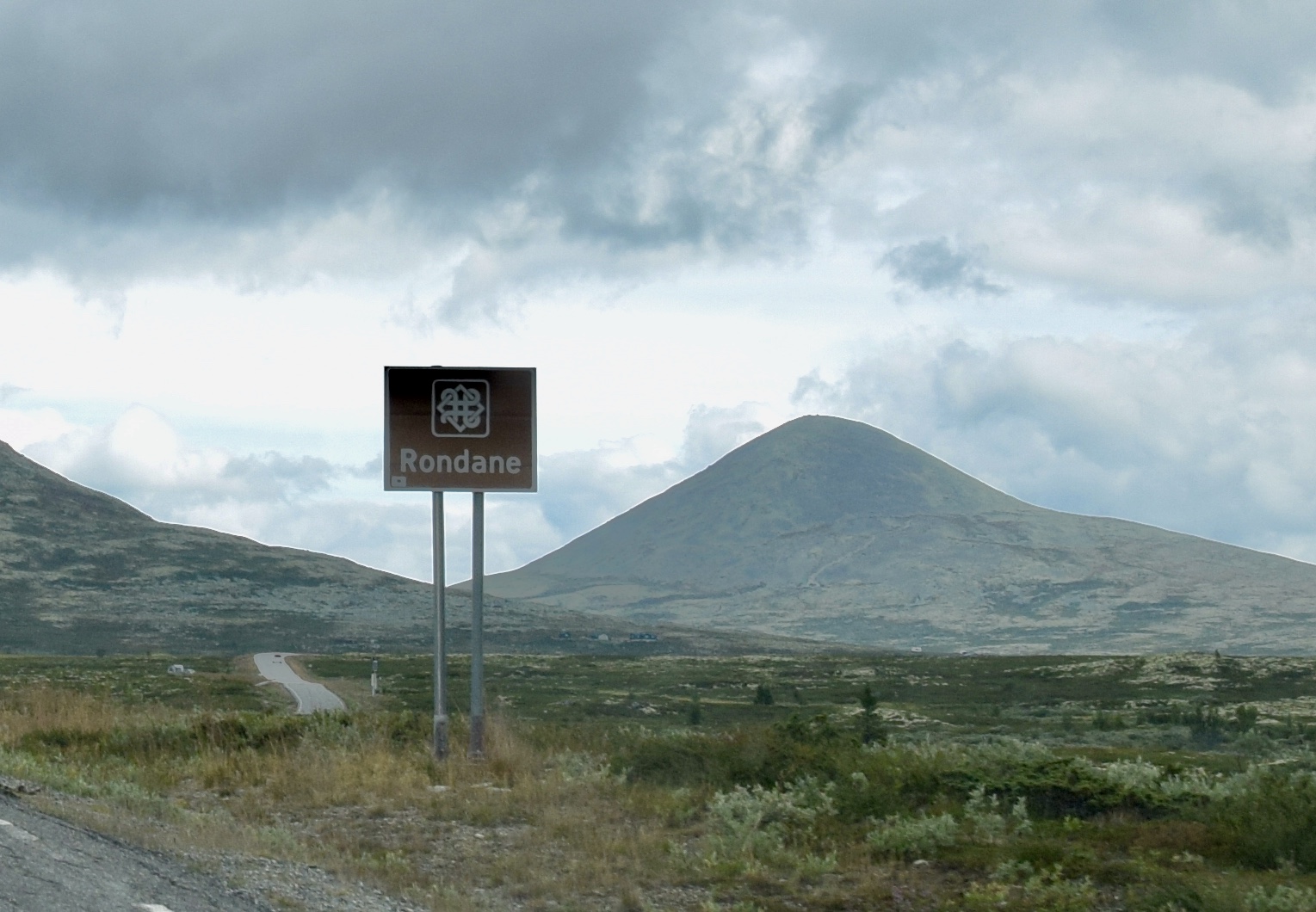
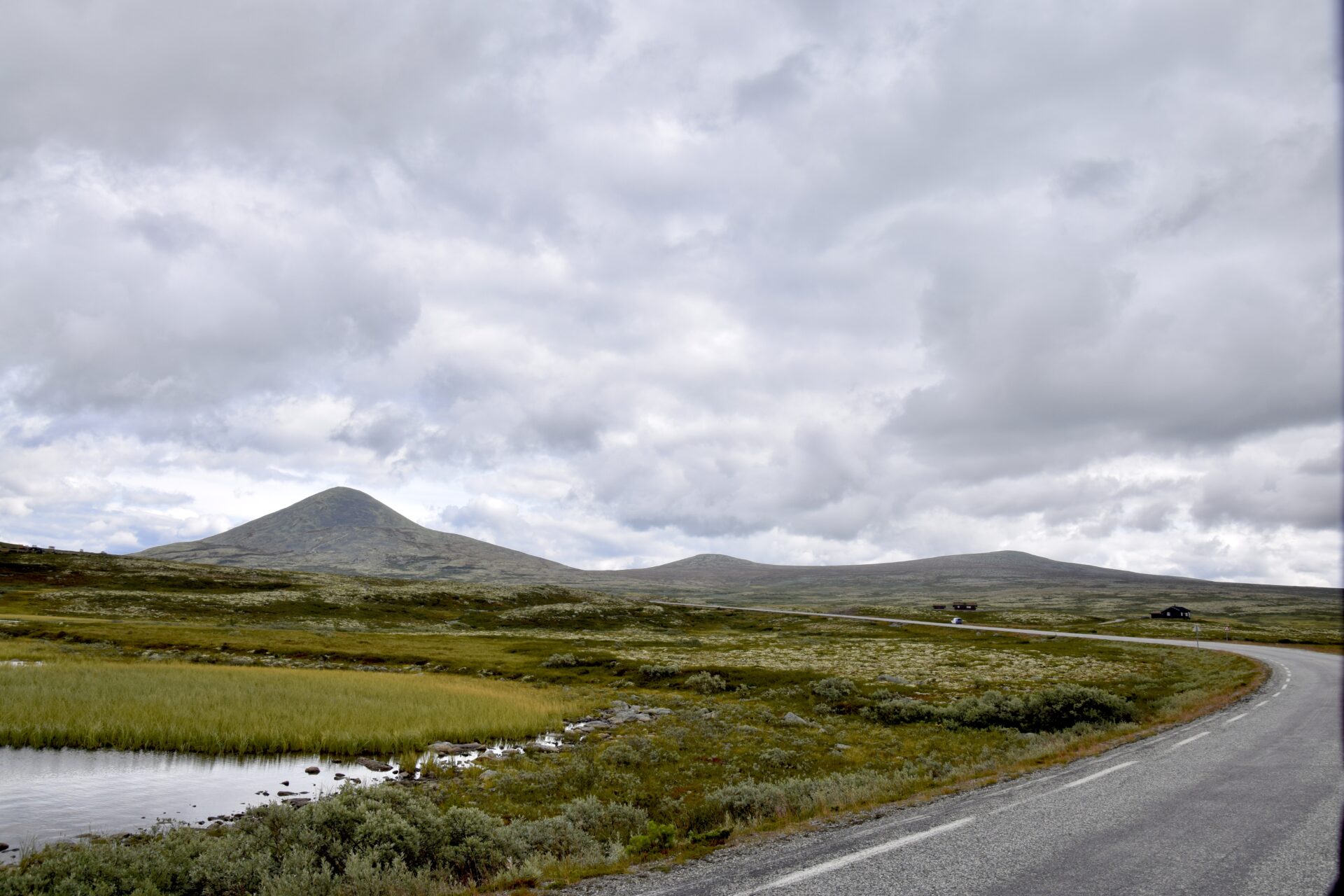
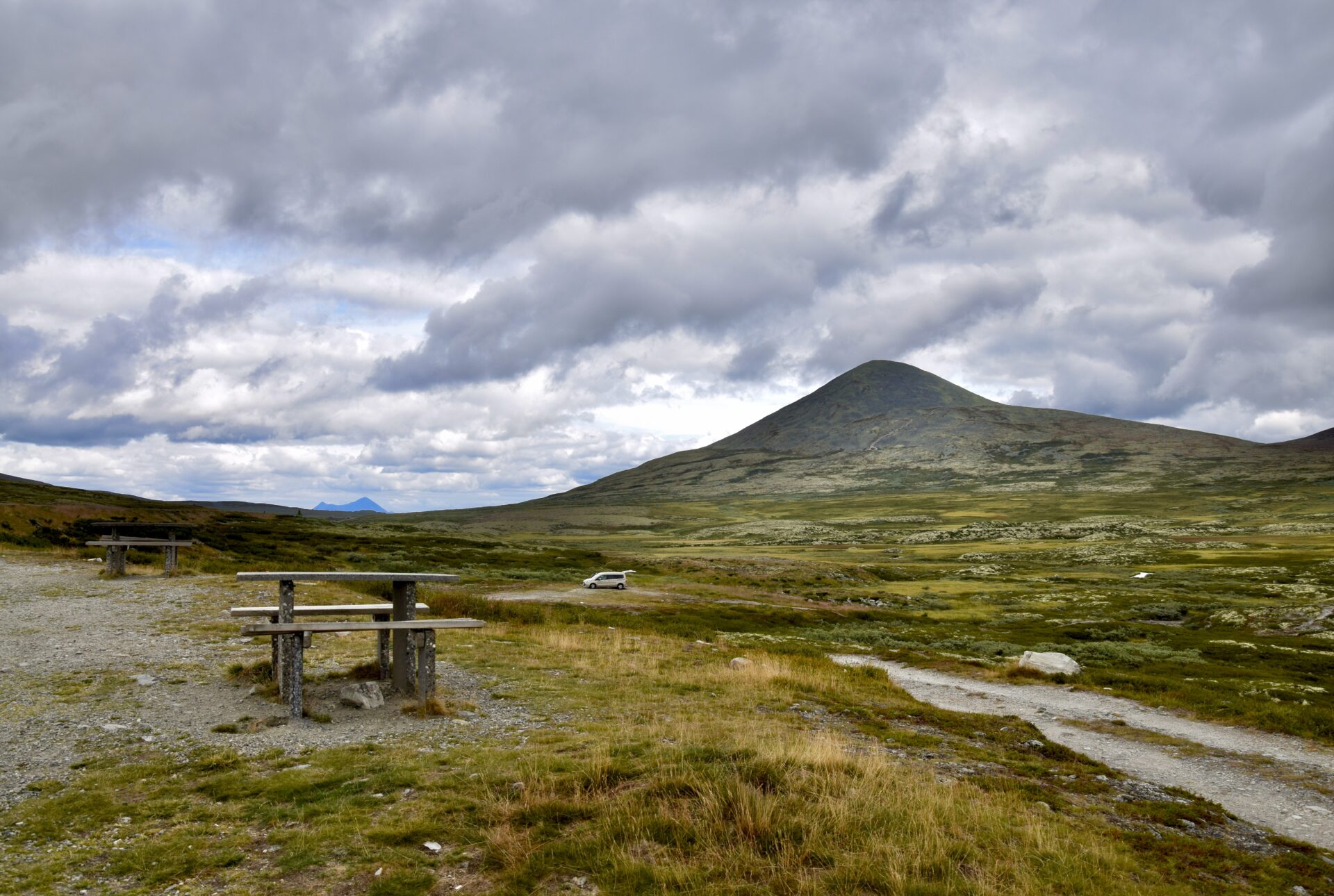
Venabygdsfjellet has one hundred forty kilometres of marked ski trails in varied terrain, suitable for family trips and training.
The Troll Trail – a ski trail, which passes through miles of untouched nature from Rondane in the north to Lillehammer in the south – goes over Venabygdsfjellet. Troll Ski Marathon, the world’s longest 1-day ski race (95 kilometres), follows the Trolløypa from Venabygdsfjellet to Sjusjøen. The race takes place in early April.
Summer months there is a network of marked hiking trails in varied, rolling mountain terrain. Birch forests, open terrain and over 30 mountain peaks are within hiking distance. Explore on your own, or join a guided walk.
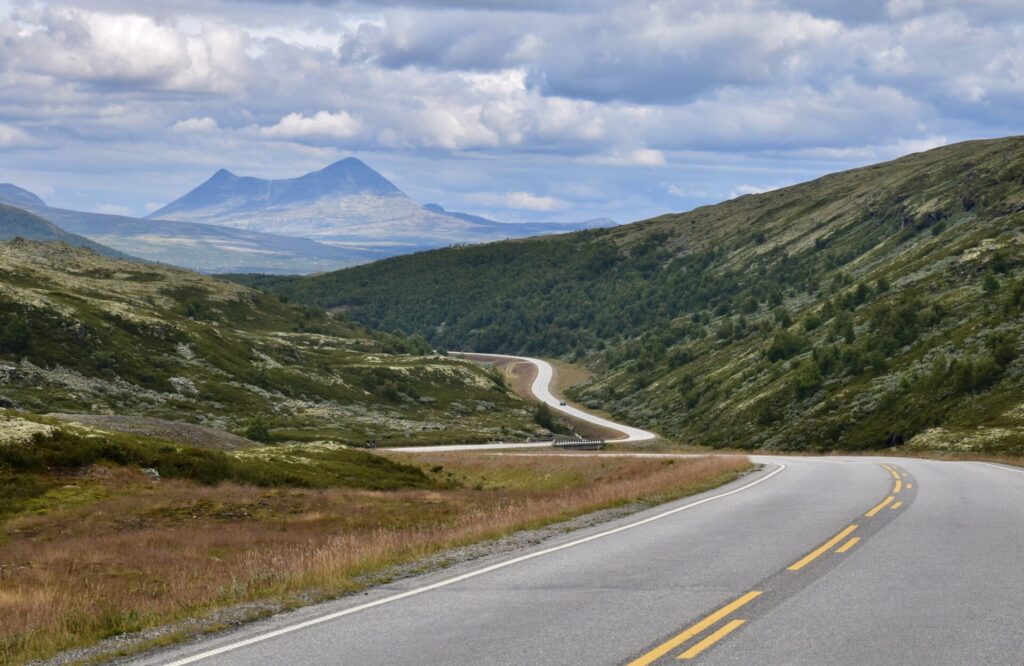
A great view from the mountain pass – before continuing towards Enden. The mountain in the background is Store Sølnkletten ( 1827 m)
SOLLIA CHURCH

After driving over the mountain area Venabygdsfjellet –
I took a detour to Sollia down FV219 from Enden, to see the old Sollia church.
It is a timber church built by master builder Jon Jonsen in 1738 and the building materials were provided by the villagers. The local people saw it necessary to have their own church as the duty to go to church was introduced. Before this, the people of Sollia would have to travel over the mountains to Ringebu twice a year. This was a tortuous journey, and on one occasion several people froze to death on the journey.
The church is richly decorated inside and is one of the country’s most beautiful and best-preserved baroque churches. Unfortunately, it was closed when I visited the church, but I got one picture showing the beautifully painted walls through the window.
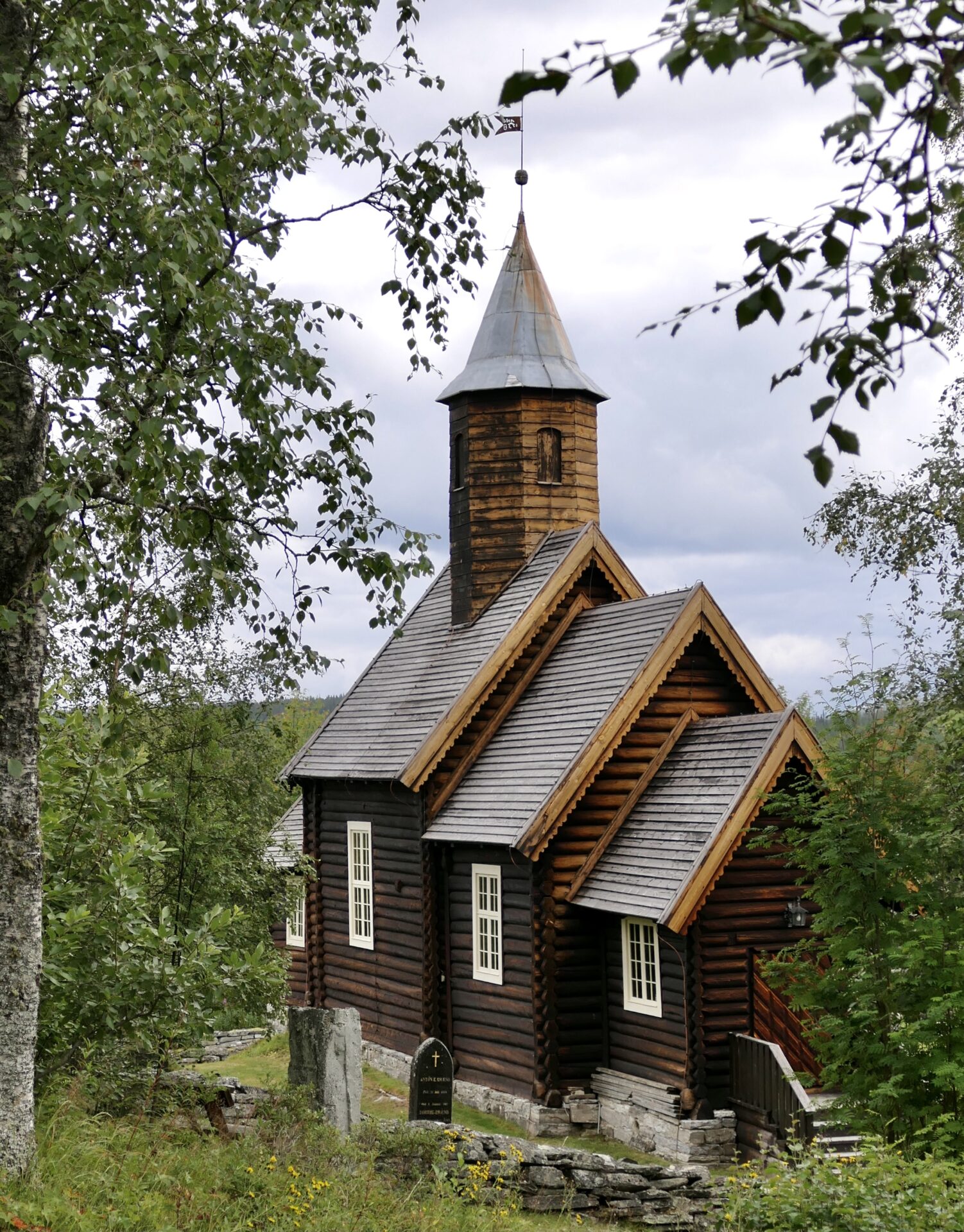
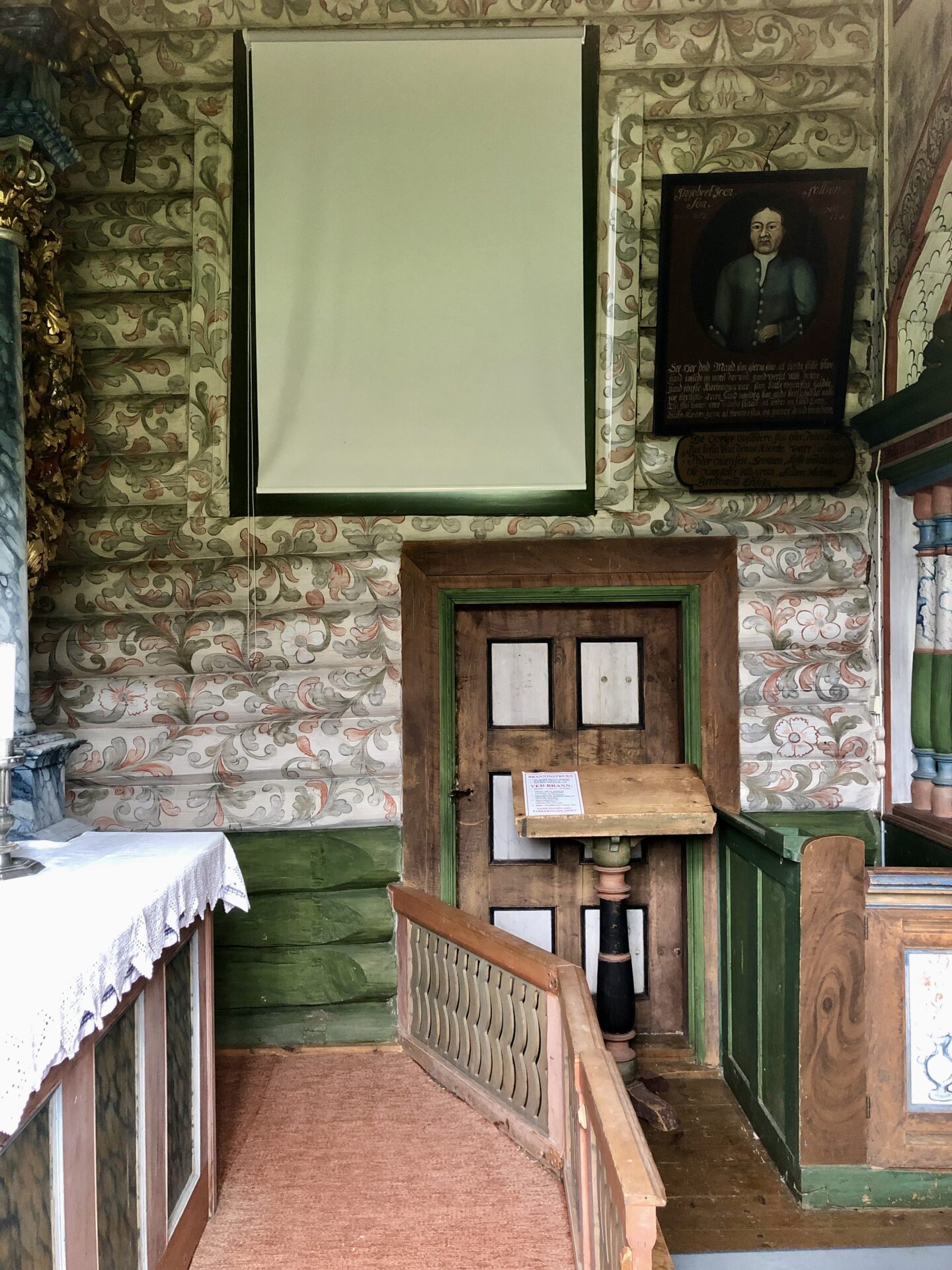
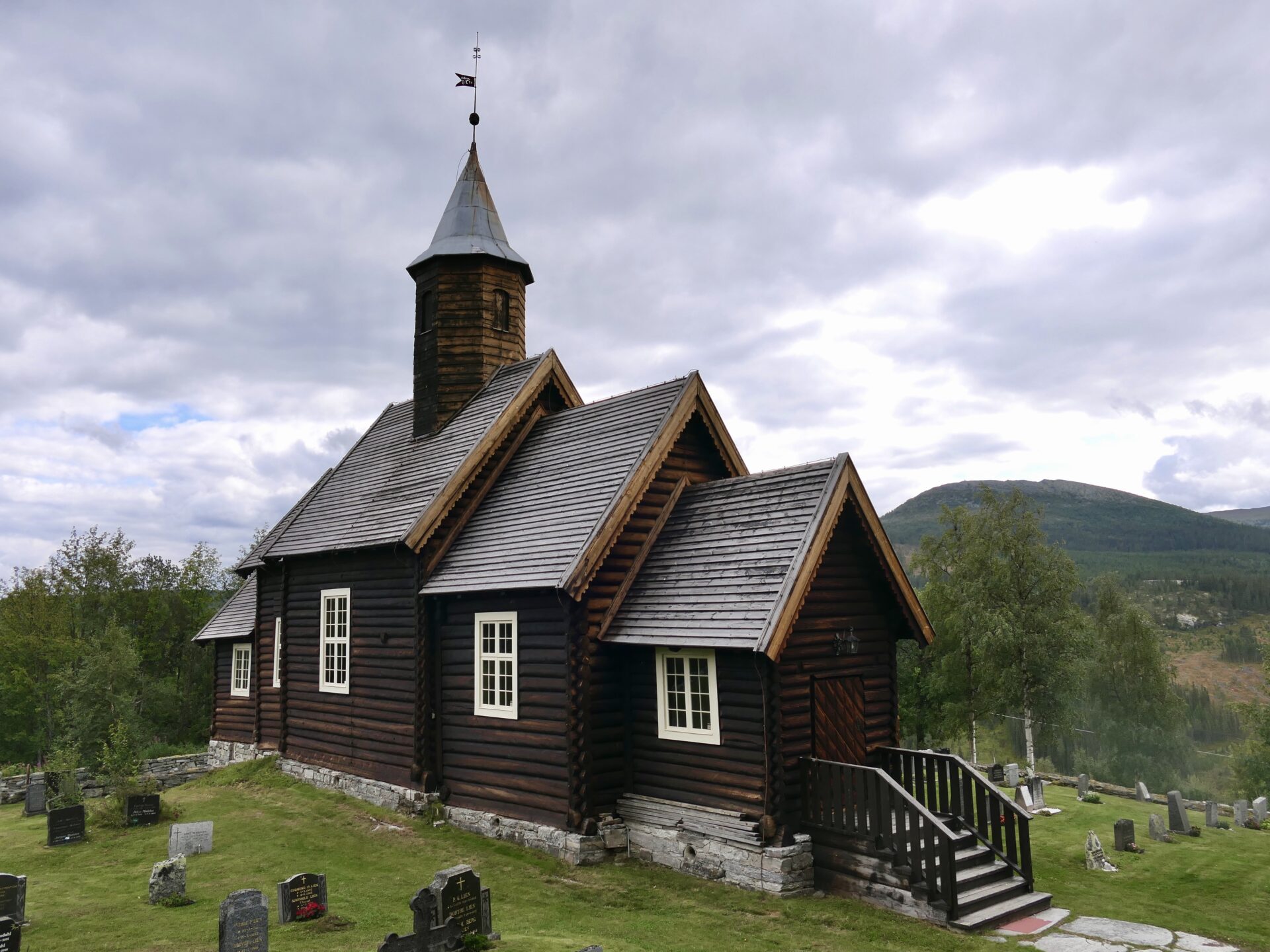

Most of the furniture is from the 1740s. The altarpiece is from 1740-45 and has, among other things, a carved crucifix flanked by mourning Mary and John. There are also several paintings from the 18th century.
Near the church is a small picnic area with information designed by landscape architect Lars Berge.
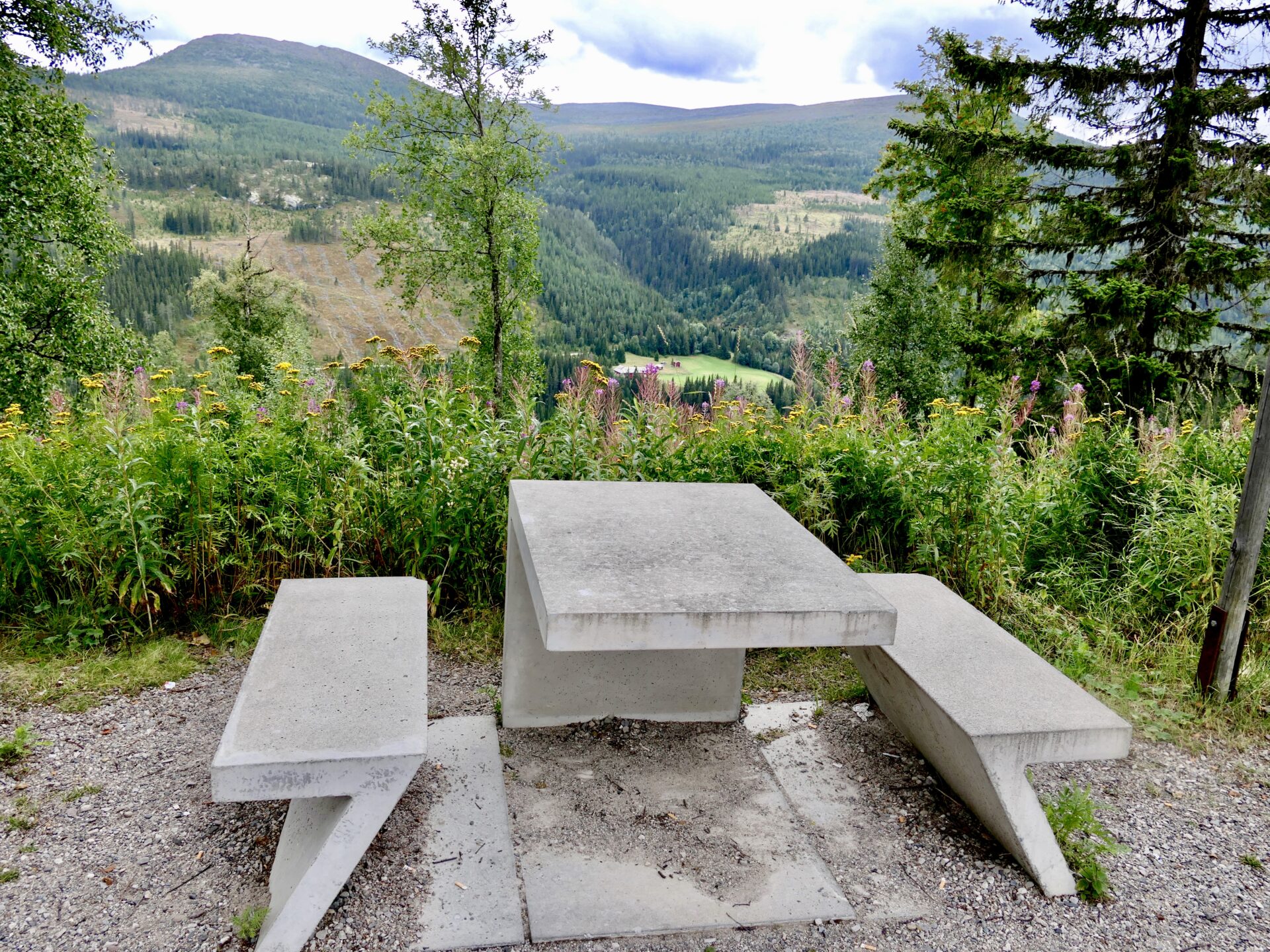
SOLLIA-YSTERIET
Between Enden and Sollia, you will find SOLLIA-YSTERIET – an old building that houses a small cheese factory and a cafe. The house was built in 1922 for the local trade association and has been, until 1999, an active trading place and a hub in everyday life for the local people. Have a stop for a cup of coffee or bye some of their tasteful cheeses.
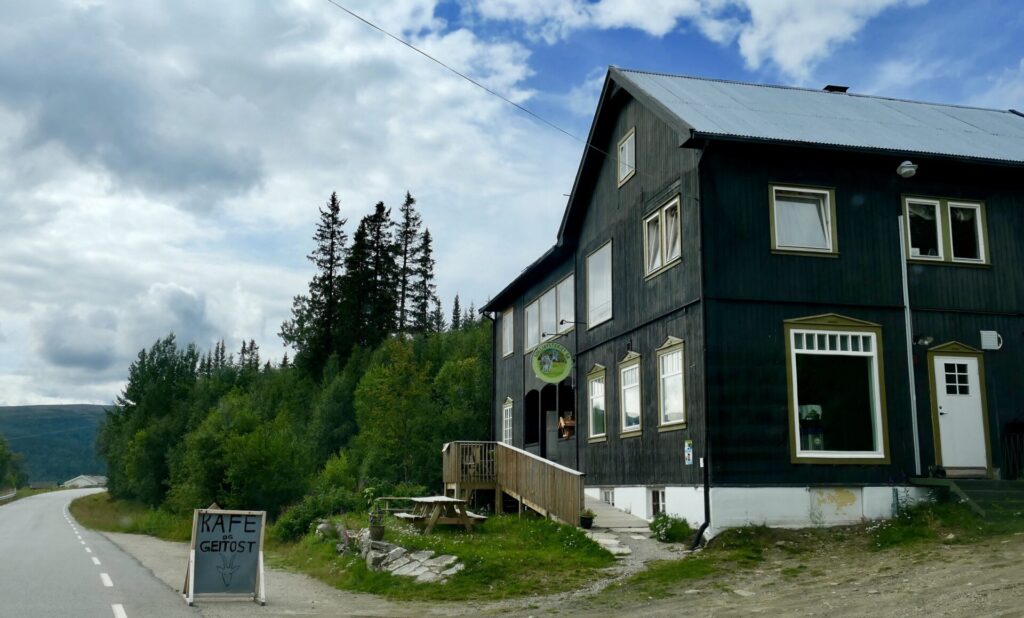
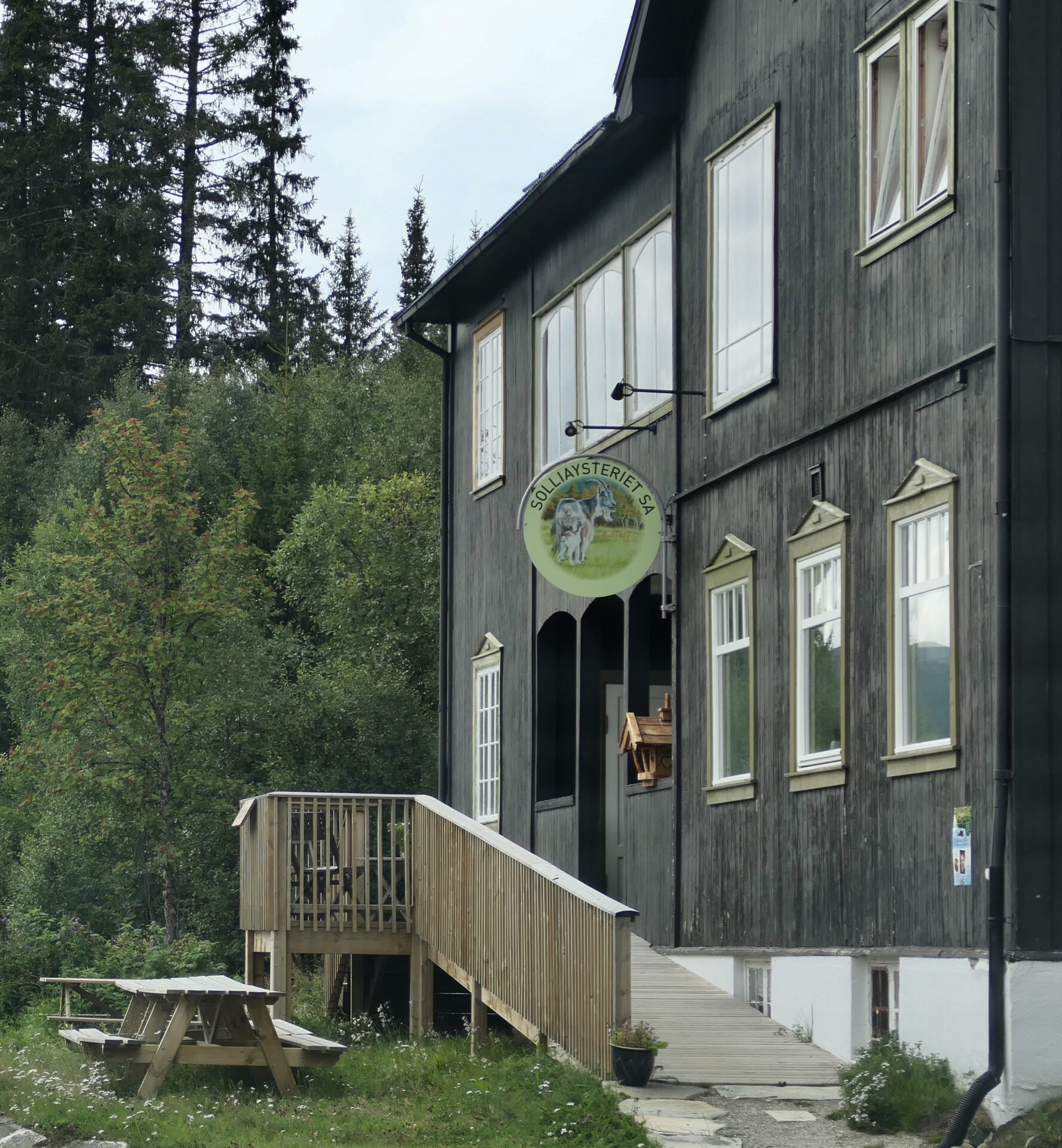
THE FARM – NORDRE BRÆND – with the cabin BORGEN where Hamsun wrote in Sollia
NORDRE BRÆND
The farm Nordre Brænd lies by the south end of Lake Atnsjøen and is close to Atnbrua and Atnfossen. The oldest buildings are from 1849.
I had the pleasure of meeting the owner, who told me he is the seventh generation Brænd. In the 1990s, they started to rent a little house which they had refurbished.
They also have boats available for rent, and fishing licenses are for sale on the farm. The fishing license includes many miles of river and small and large lakes loads.
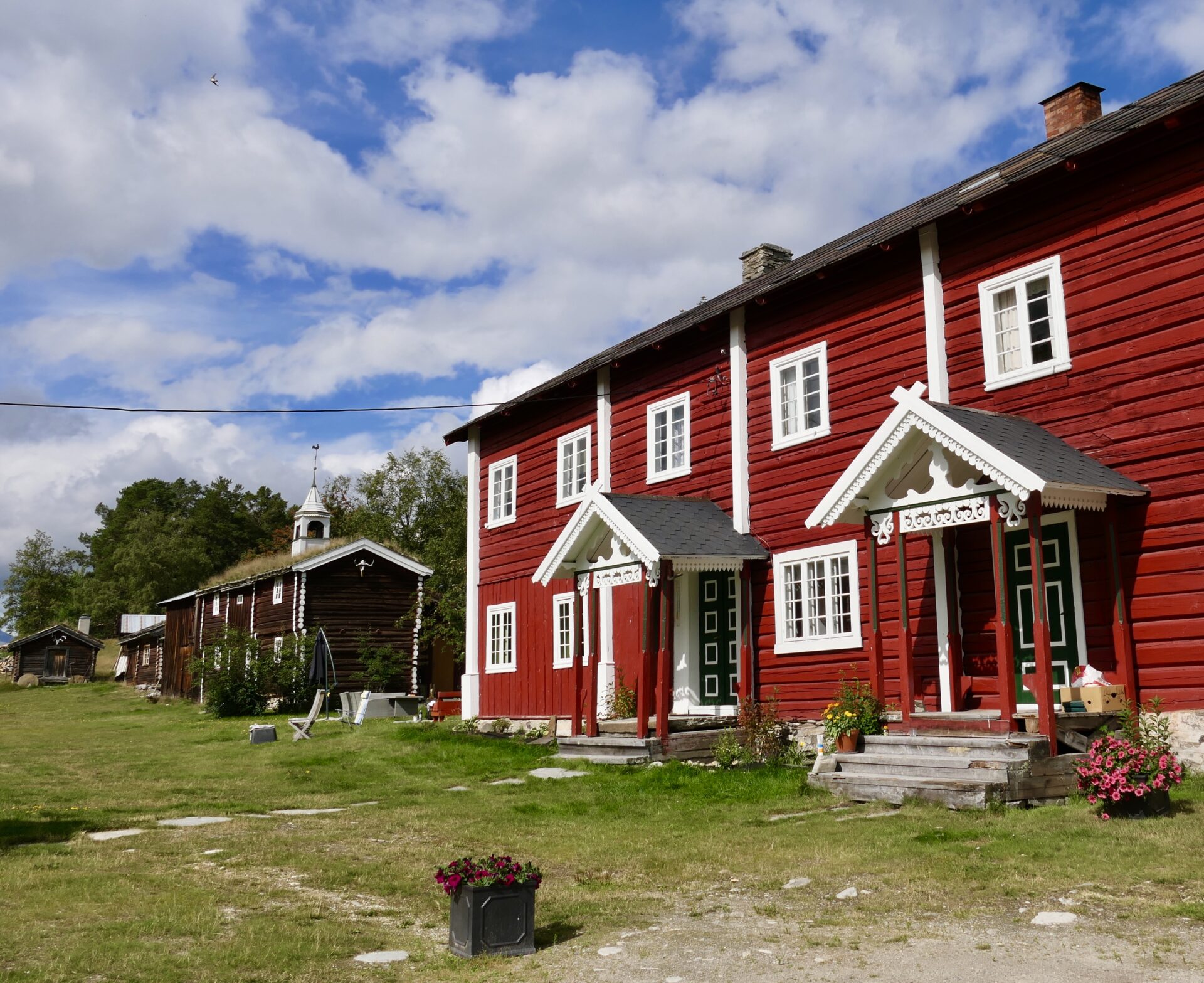
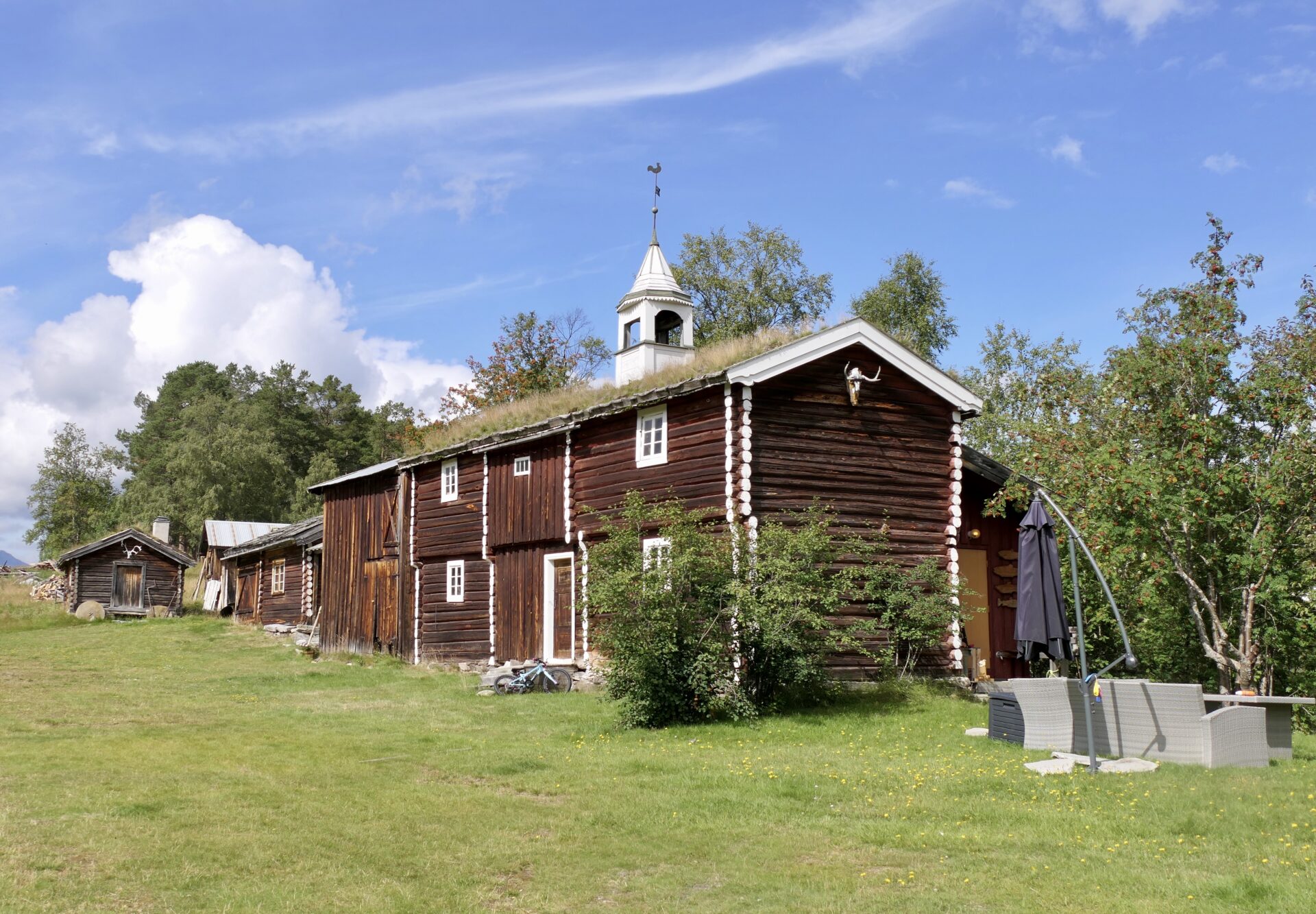
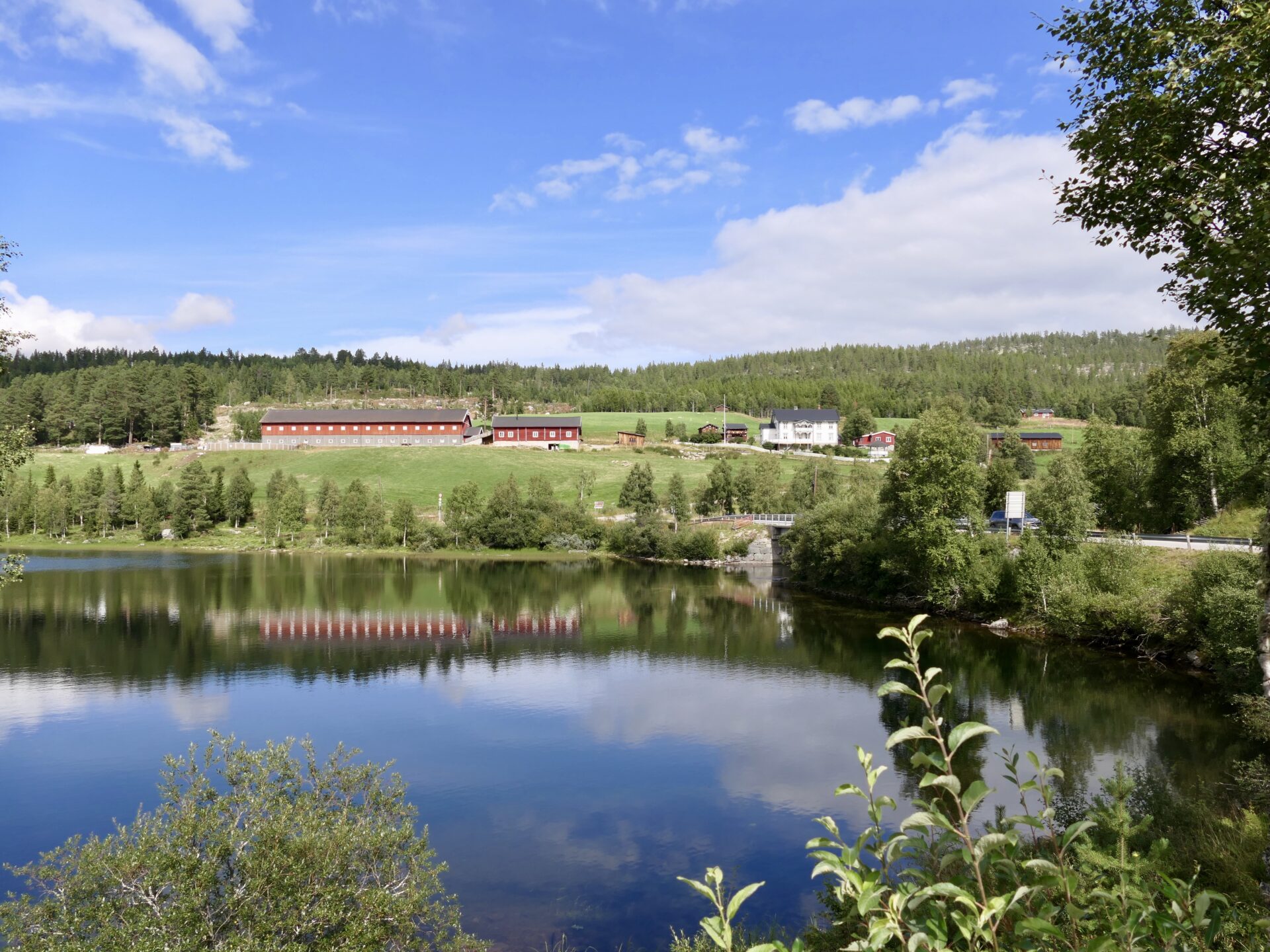
BORGEN – the cabin where Hamsun wrote in Sollia
The famous Norwegian author Knut Hamsun (1859-1952) and his wife Marie stayed at Nordre Brænd in Sollia as newlyweds from the summer of 1909 to 1910. When writing, Knut Hamsun used the farm’s cabin called Borgen, his place of refuge, and nobody was allowed in. Not even his wife, Marie. He needed complete peace while he wrote.
At Borgen, he worked on the novel “The Wanderer” and the play “In the grip of life”.
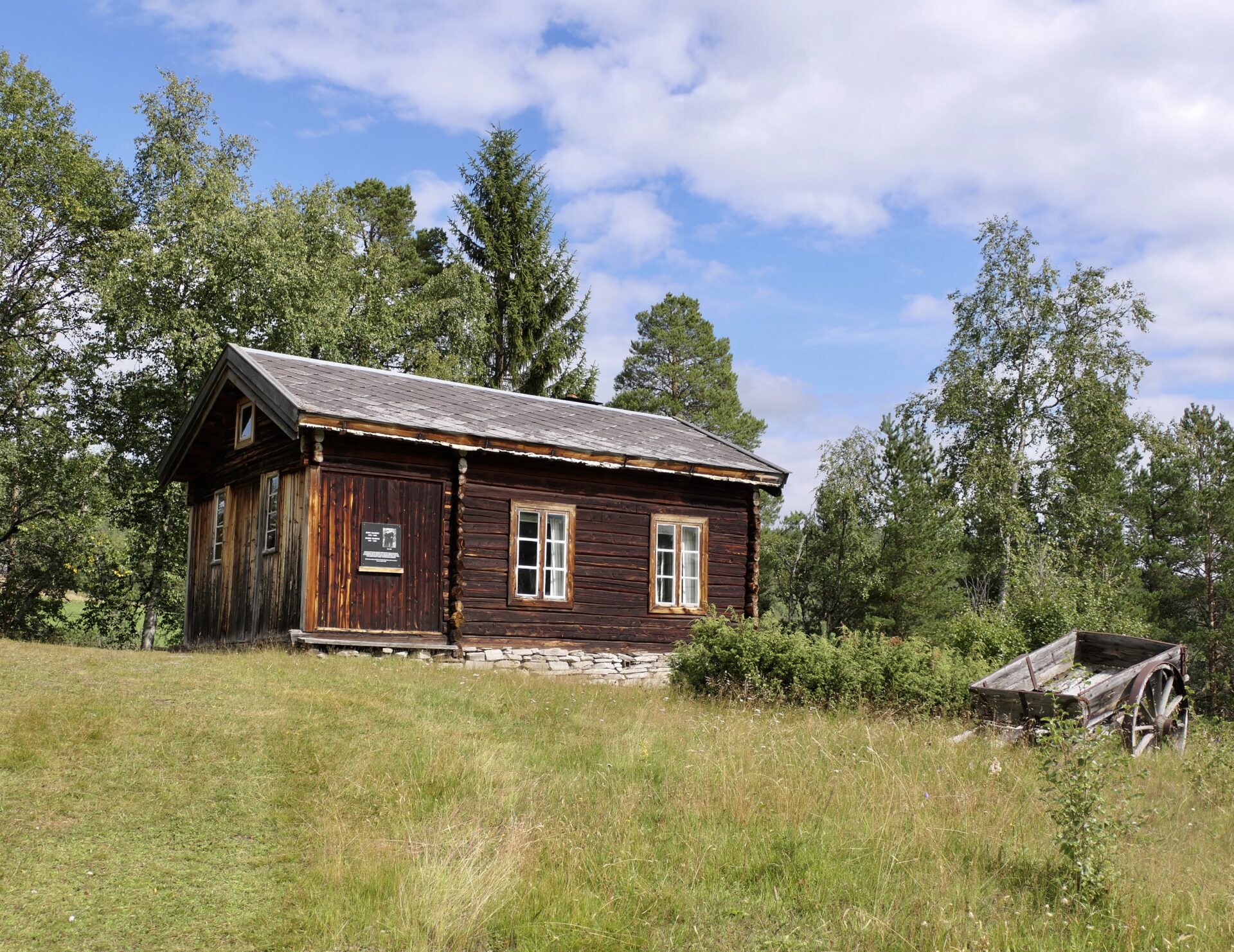
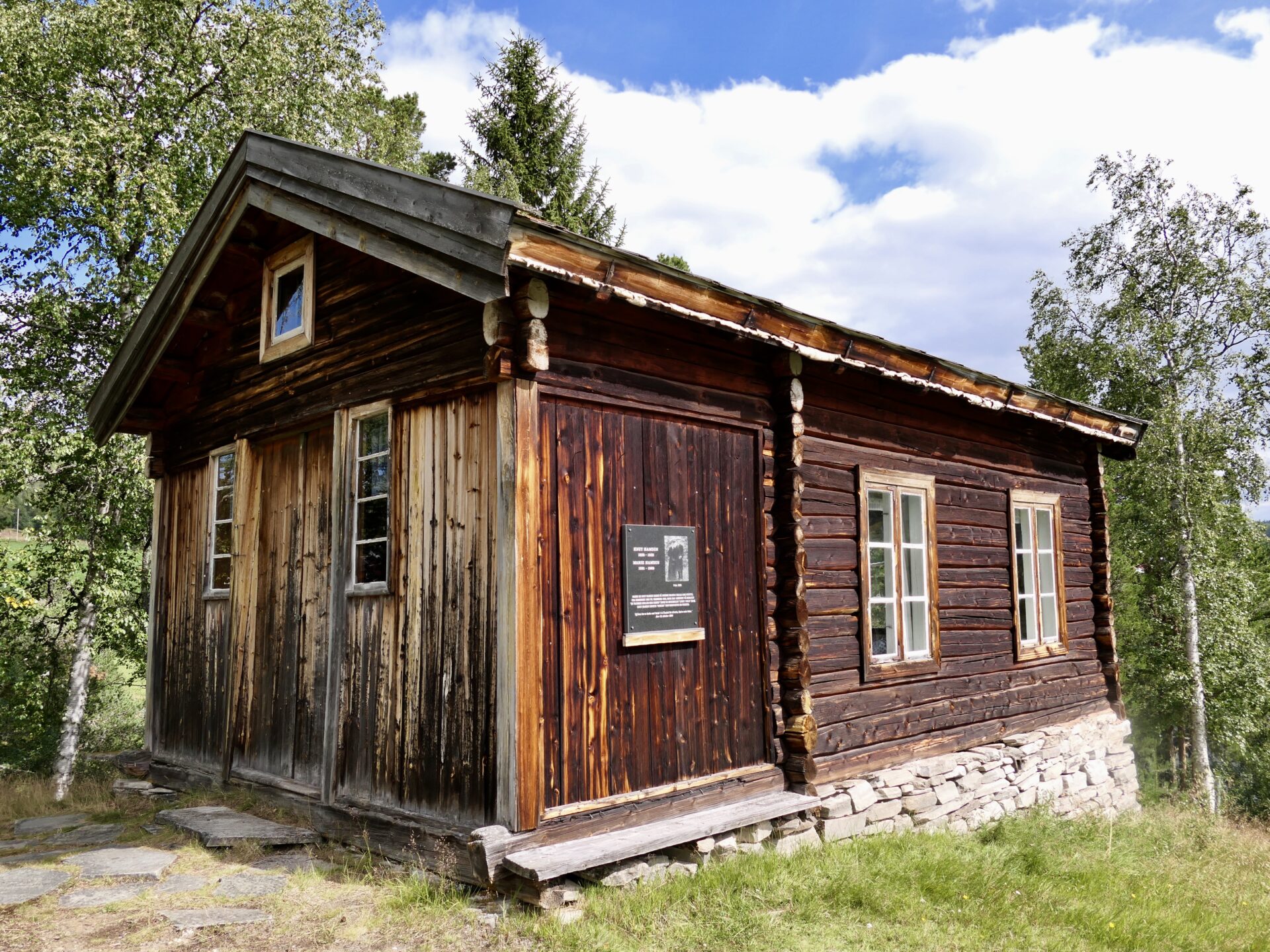
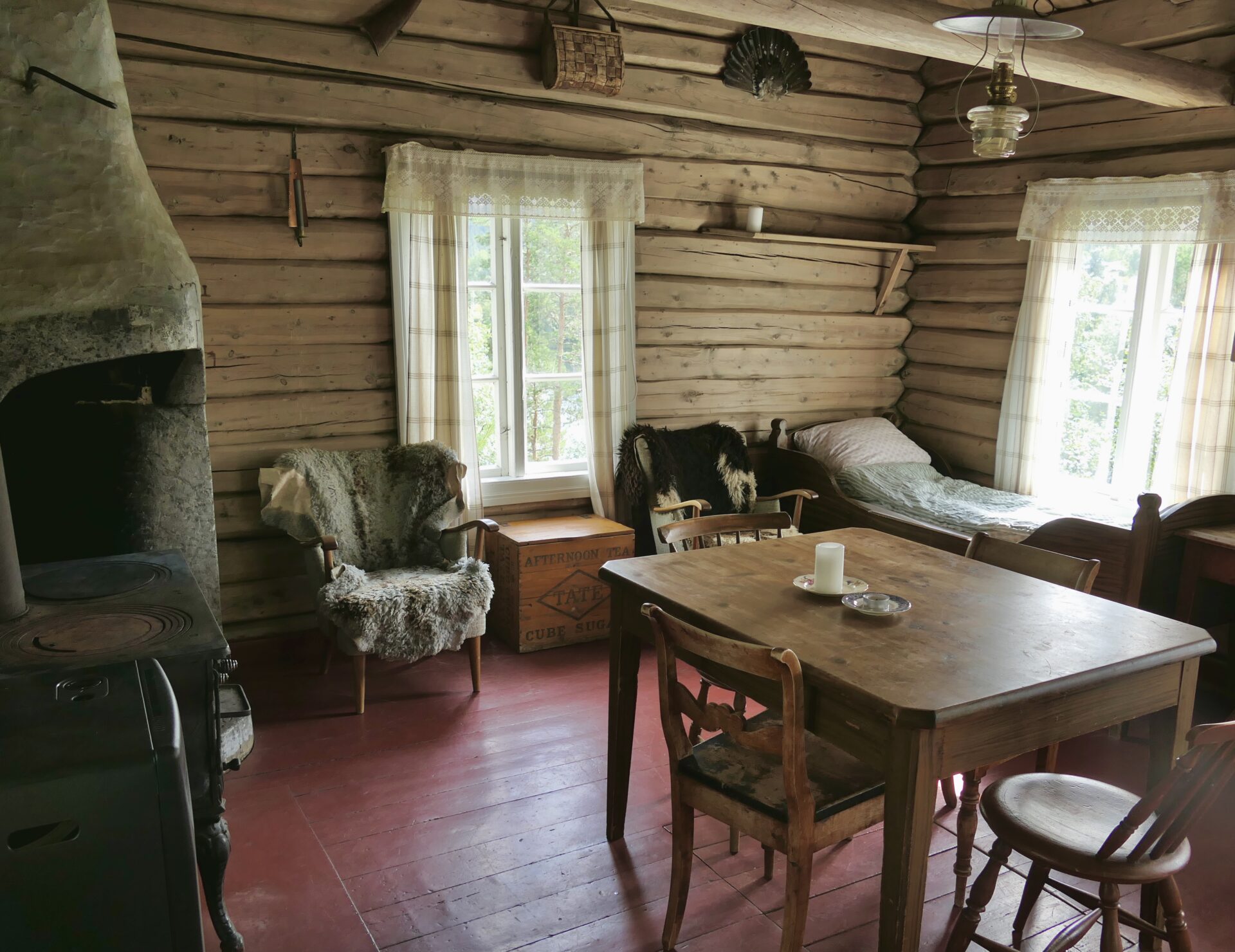
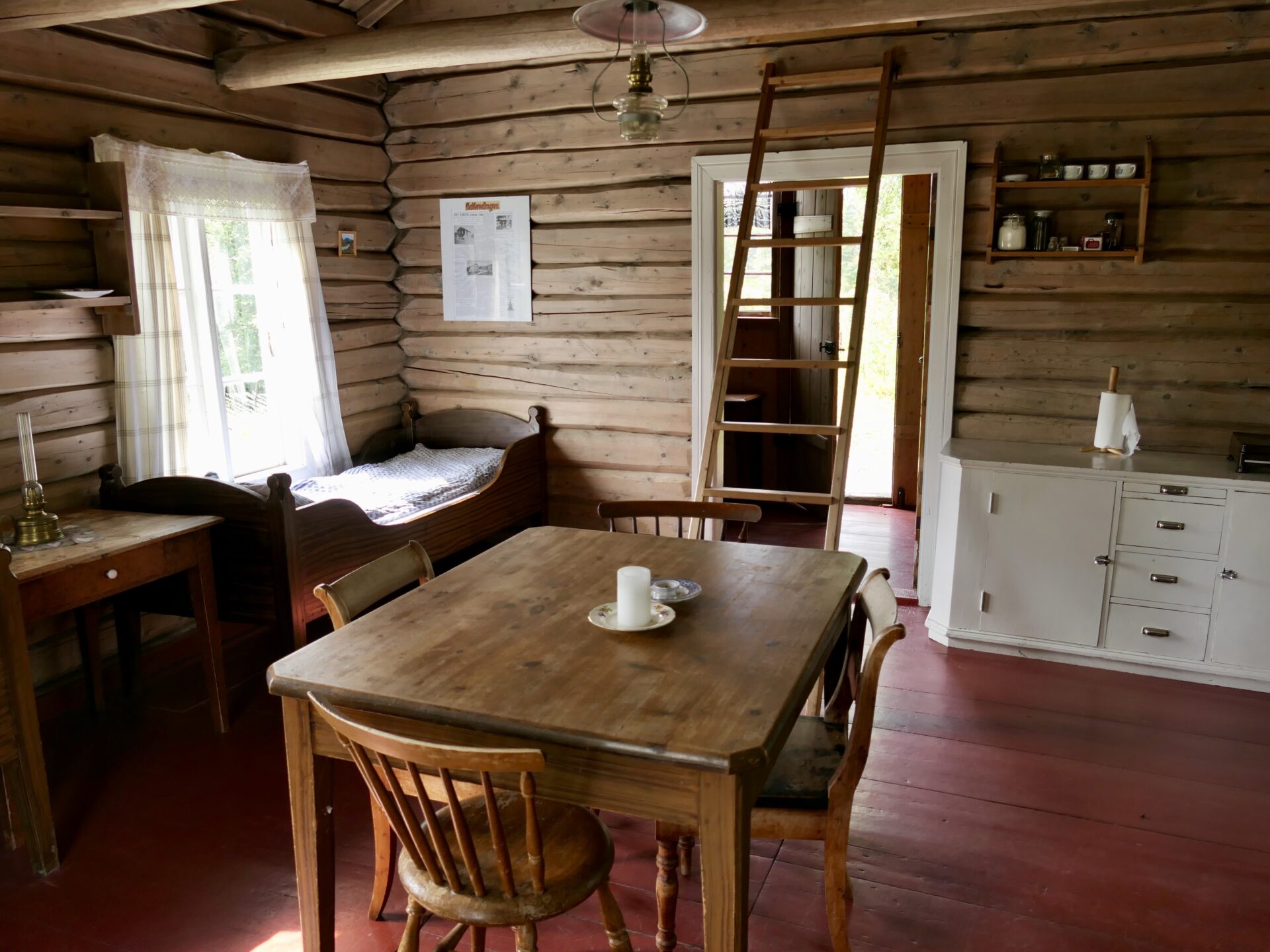
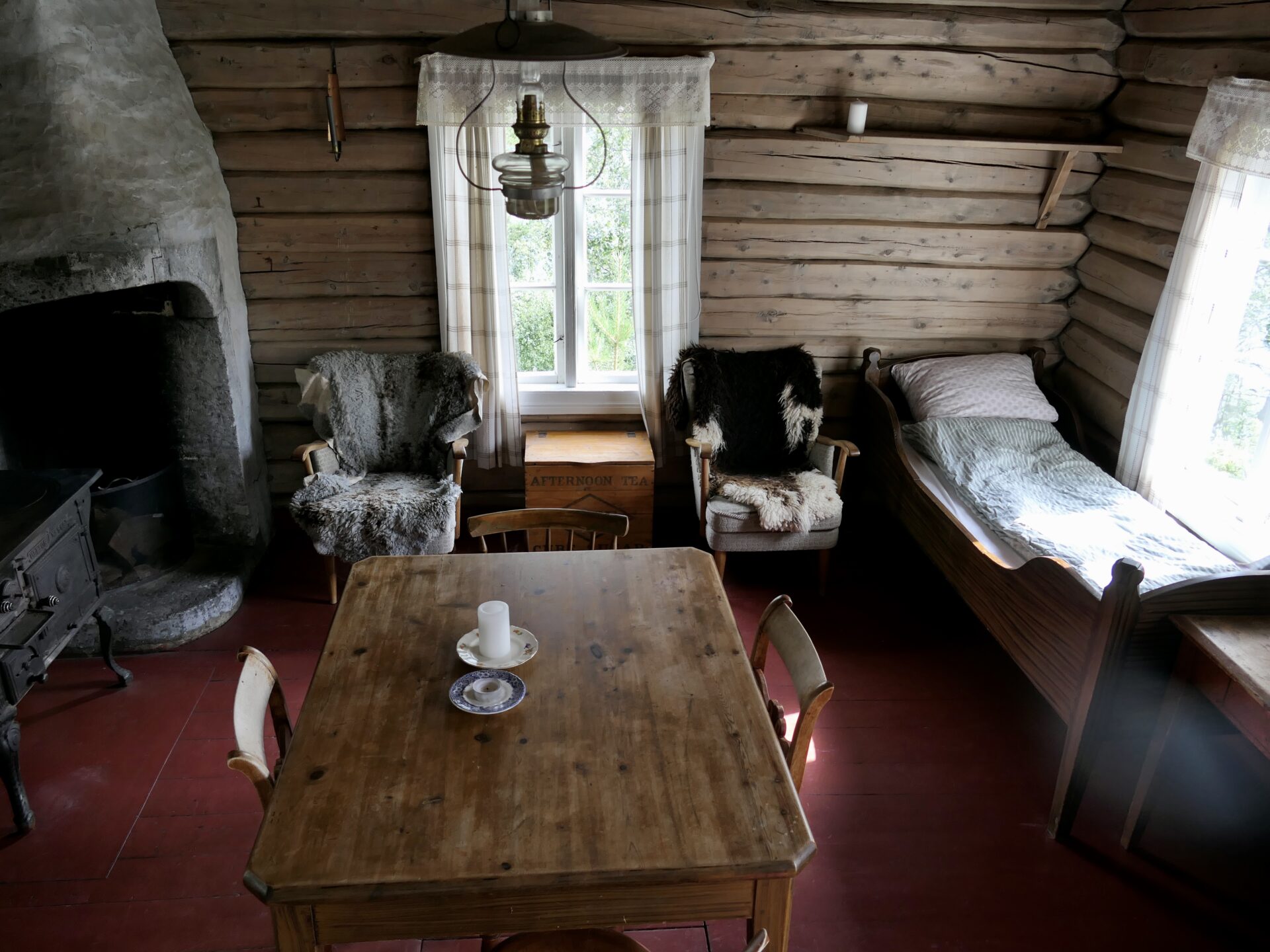
Now is also Borgen for rent, you can stay in this cosy cabin with the old fashioned interior. Here you will find two proper beds, one smaller bed, and a loft for slightly older children.
The cabin was booked for the night I came to visit, but the owner let me look inside before the visitors arrived. A great experience; I want to stay here someday! The cabin is across the road from the farm, right next to Atnfossen.
ATNBRU AND
ATNFOSSEN VANNBRUKMUSEUM
The Atnbru area is one of the most outstanding cultural landscapes in Hedmark county.
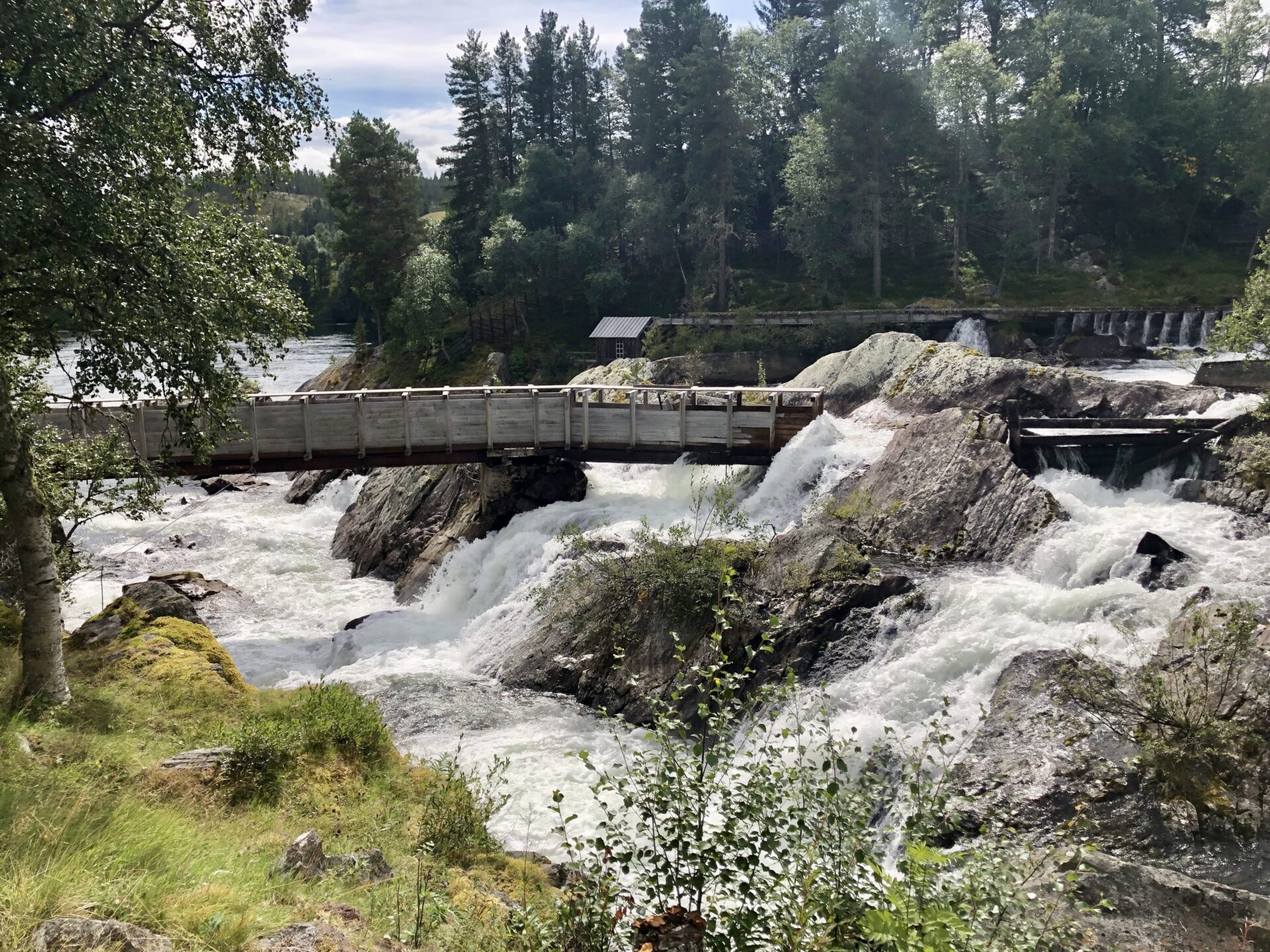
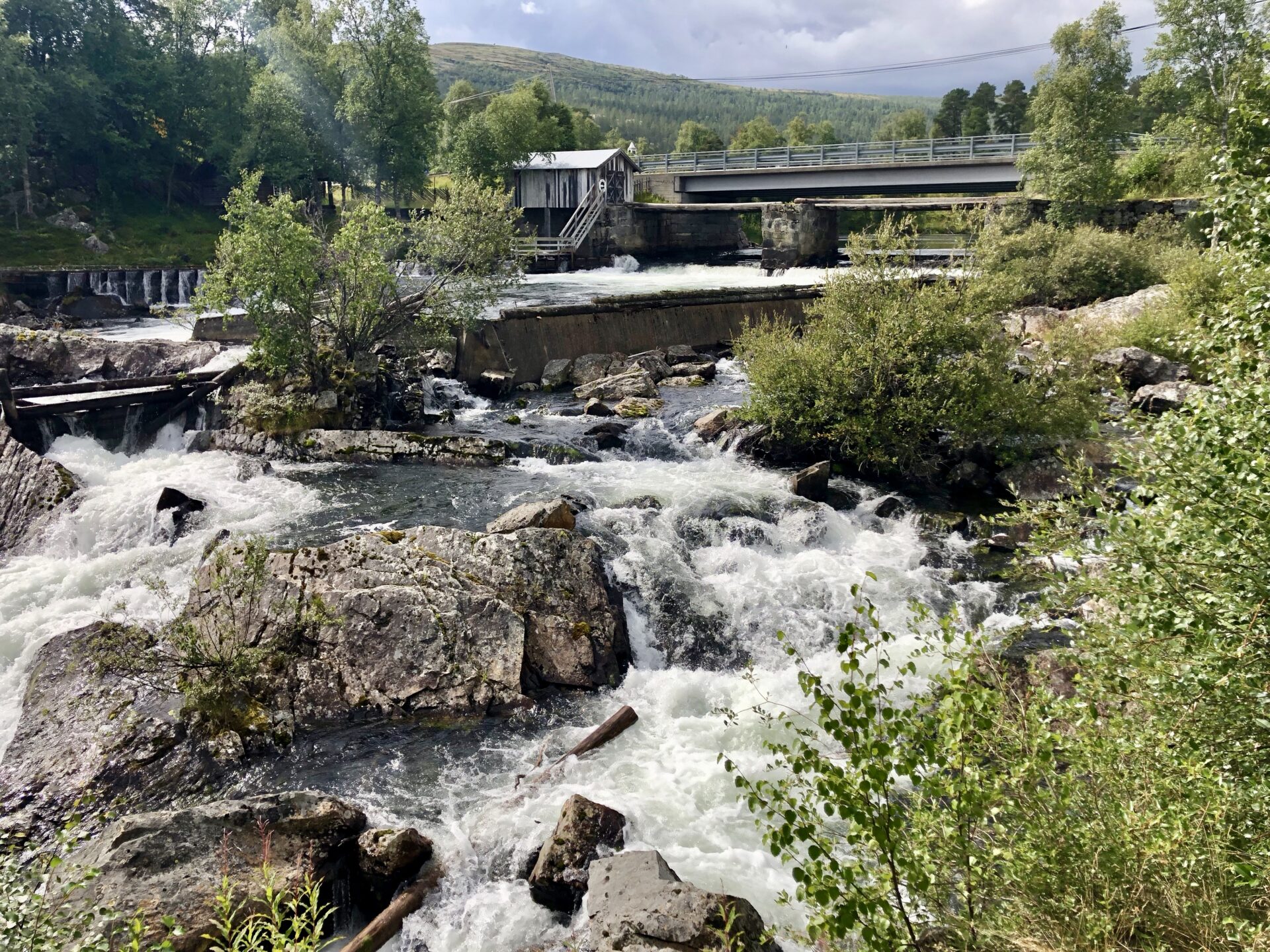
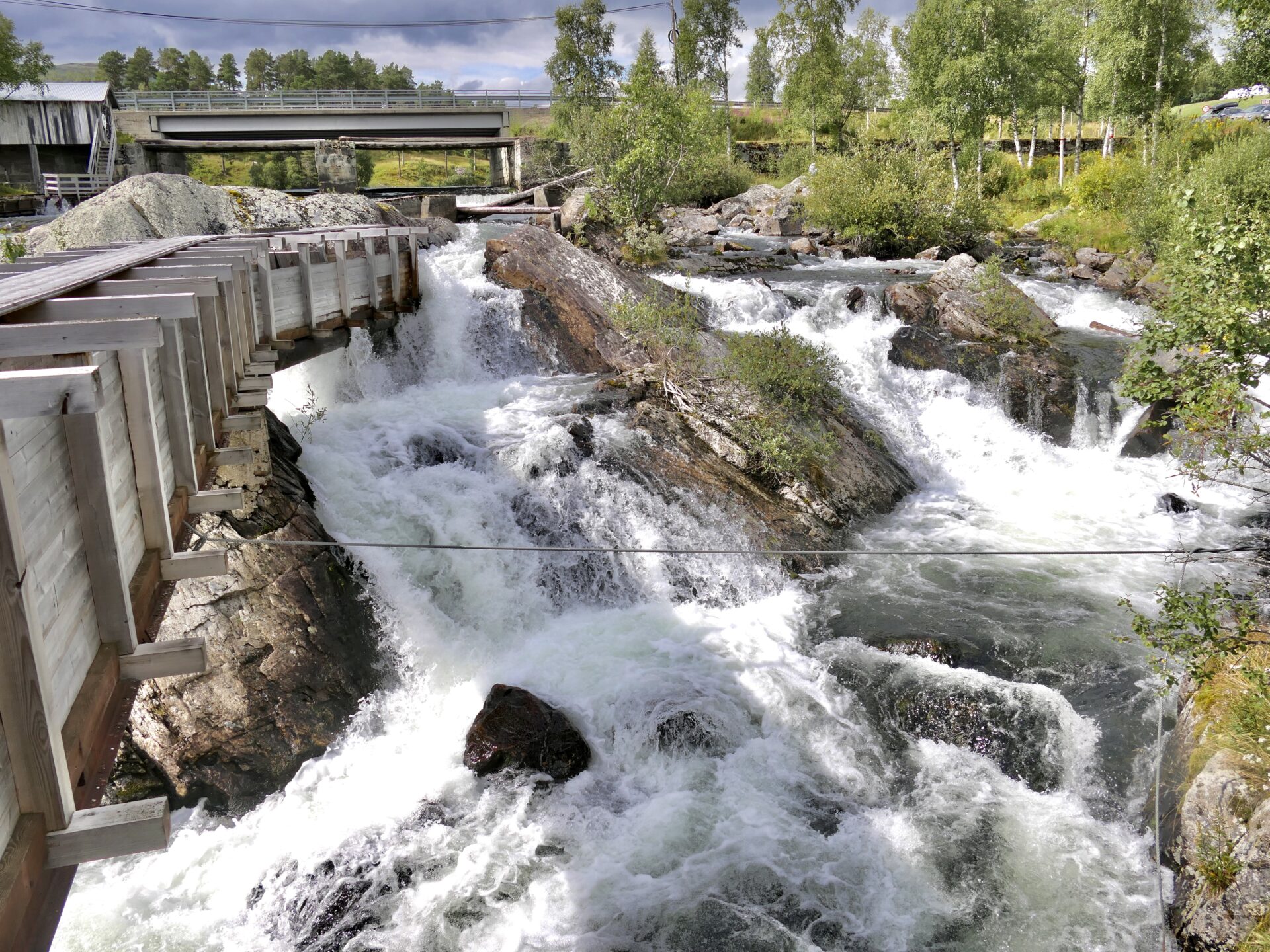
Fossehuset, the museum at Atnbrufossen waterfall lies in a lush birch grove. The building was formerly a sawmill with timber-floating facilities and a hydropower station but is now also a venue for art exhibitions and concerts.
Landscape architect: LJB AS – Lars Berge
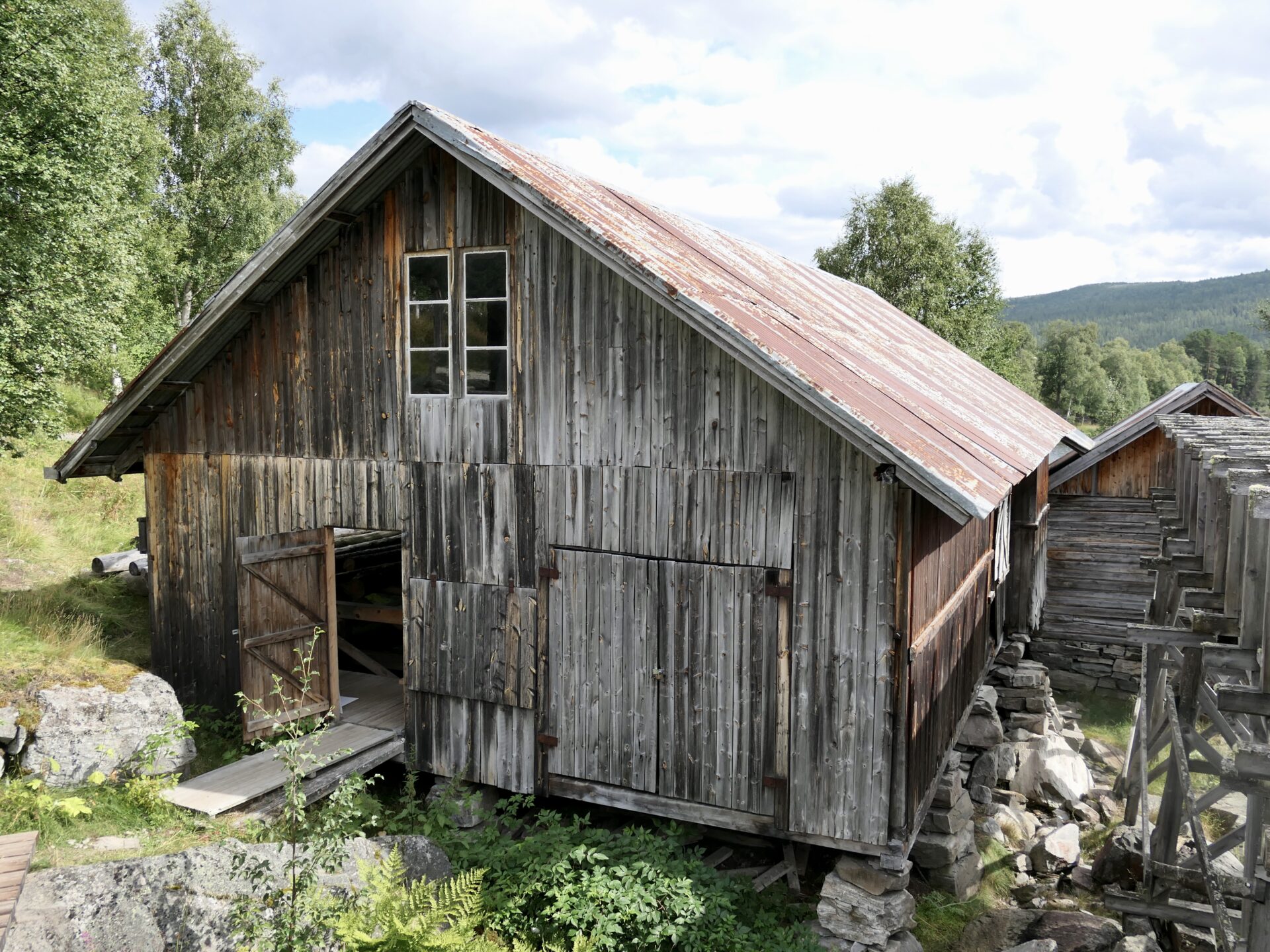
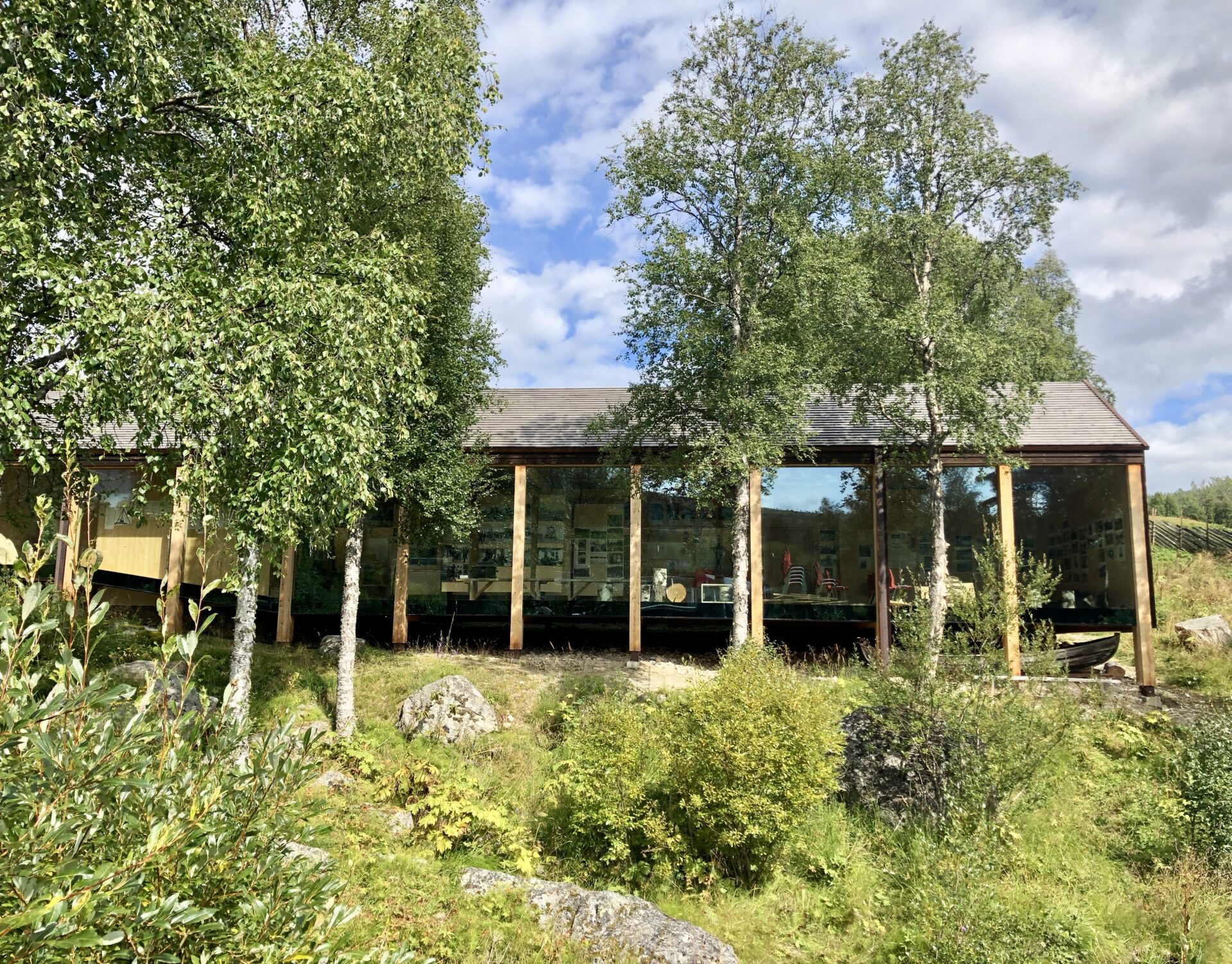
From Atnbrua the route follows RV27 north through Atndalen (valley), having Atnsjøen lake and the Rondane mountains to the west.
Atndalen gets its name after the 97 km long river Atna, which comes from Verkilsdalsvatn in Rondane and empties into the Glomma near Atna. It is among Glomma’s largest tributaries in Østerdalen. The river Atna with the beautiful Atnsjøen forms a watercourse known as Norway’s cleanest.
RONDANE NATIONAL PARK
The impressive Rondane mountain peaks, several over 2000 m asl, which you can see in the west, are within Rondane National park. The park is the oldest national park in Norway, established in 1962, and contains ten peaks above 2,000 metres (6,560 ft). The highest is Rondeslottet at an altitude of 2,178 m. The others are: Storronden (2,138 m), Høgronden (2,114 m), Midtronden western summit (2,060 m), Vinjeronden (2,044 m), Midtronden eastern summit (2,042 m), Trolltinden (2,018 m), Storsmeden (2,016 m), Digerronden (2,015 m), and Veslesmeden (2,015 m).
The park is an important habitat for herds of wild reindeer.
Visitors to Rondane are free to hike and camp in all areas of the park, except in the immediate vicinity of cabins. Fishing and hunting are available to licensees.
The Norwegian Mountain Touring Association (DNT) owns and manages a network of mountain cabins in the service of hikers. In Rondane, there is a central cabin by the southern end of the lake Rondvatnet, Rondvassbu. There is also Dørålseter and Bjørnhollia at the northern and eastern rims of the park. All three cabins are manned and provide food and limited accommodation (possible to book beforehand). There are also un-manned cabins in the Park, like Eldåbu where a key is needed.
The service cabins are also open during the winter season, although they are sometimes only self-serviced offseason. Ski trails are marked and sometimes prepared, either by DNT or some of the hotels and skiing resorts close to the park.
**************
Towards the main viewpoint Sohlbergplassen, I passed the Atnsjøen Cafe which also has cabins for rent. From this area, there is a great view of the Rondane mountains.
SOHLBERGPLASSEN – REST AREA AND VIEWPOINT
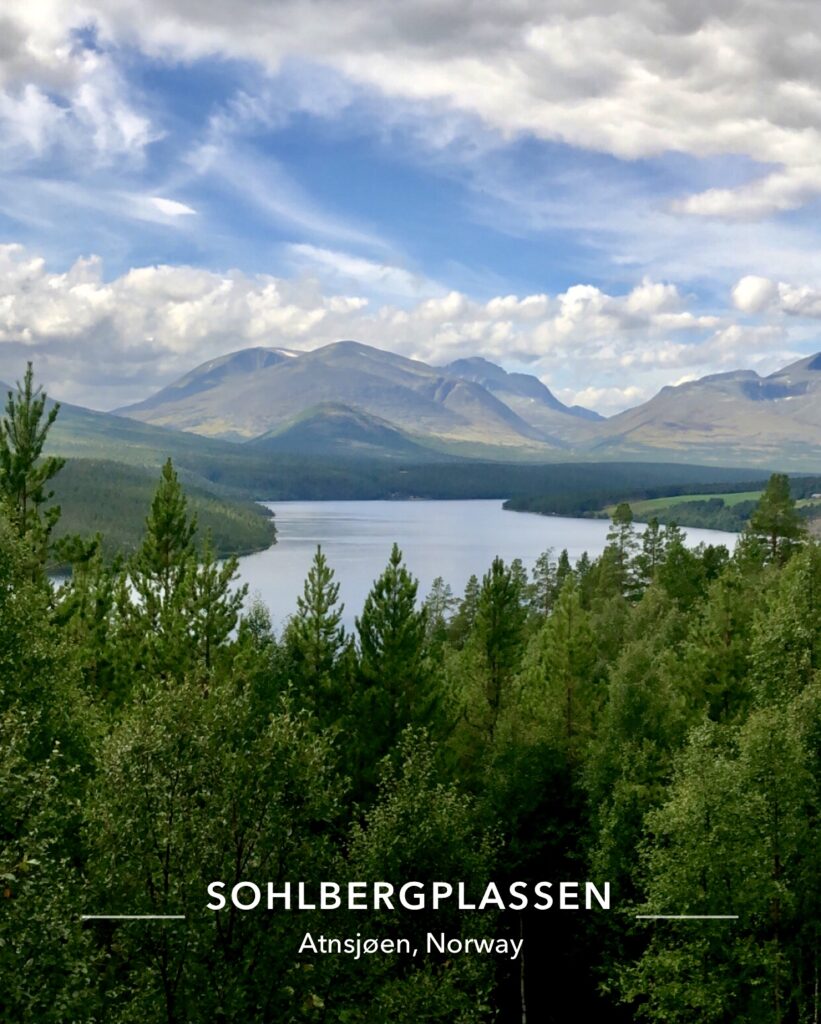
Sohlbergplassen – is a beautiful viewing point and rest area near Atnsjøen lake. The spot has a grand and majestic view of the rounded peaks of the Rondane massif – just like they appear in Harald Sohlberg’s famous painting “Winter’s Night in Rondane”. You can admire the view from the elegant concrete platform that curves around the slender pine trees.
The architect of the viewing platform is
Carl-Viggo Hølmebak

Harald Sohlberg’s famous painting
“Winter’s Night in Rondane”
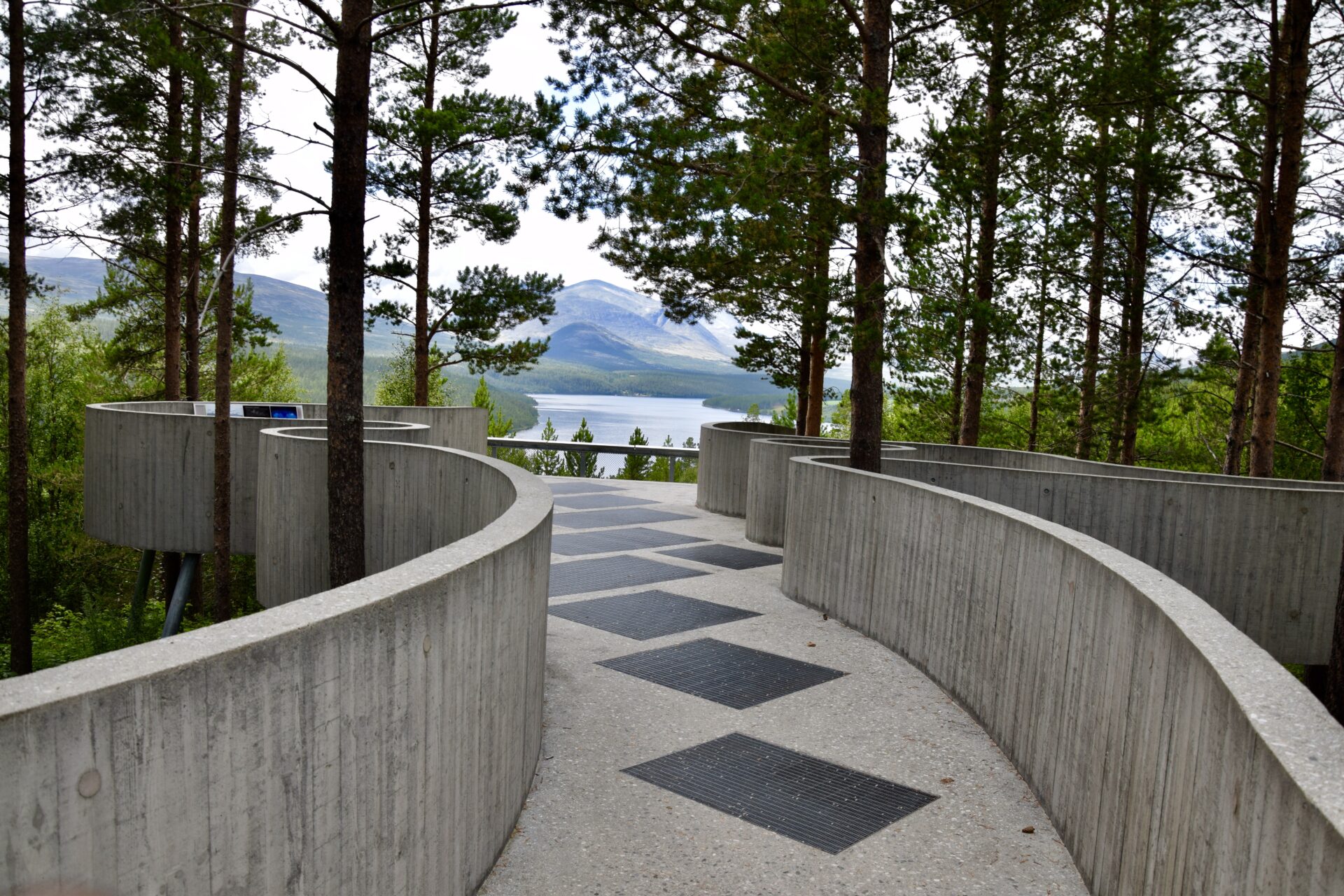
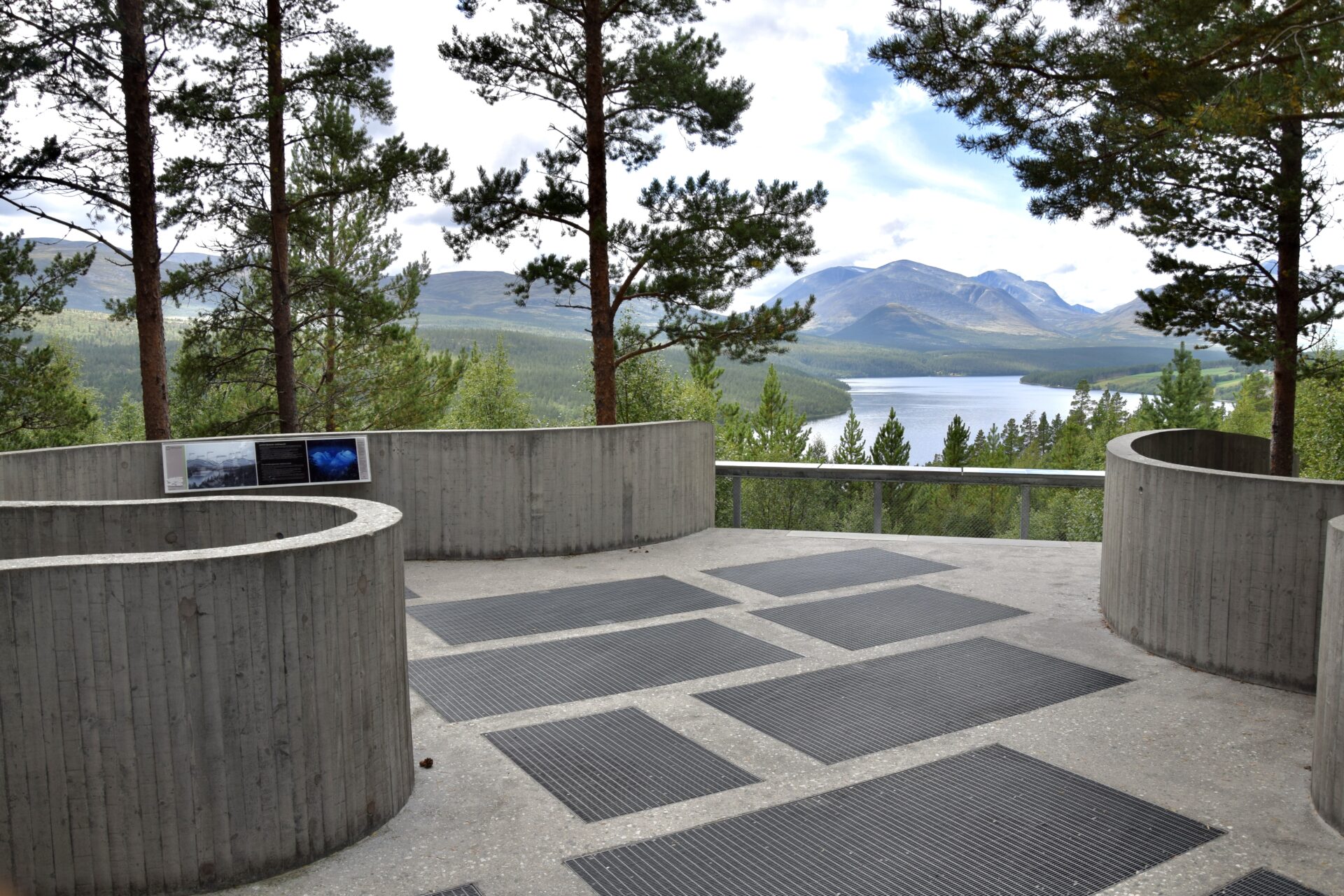
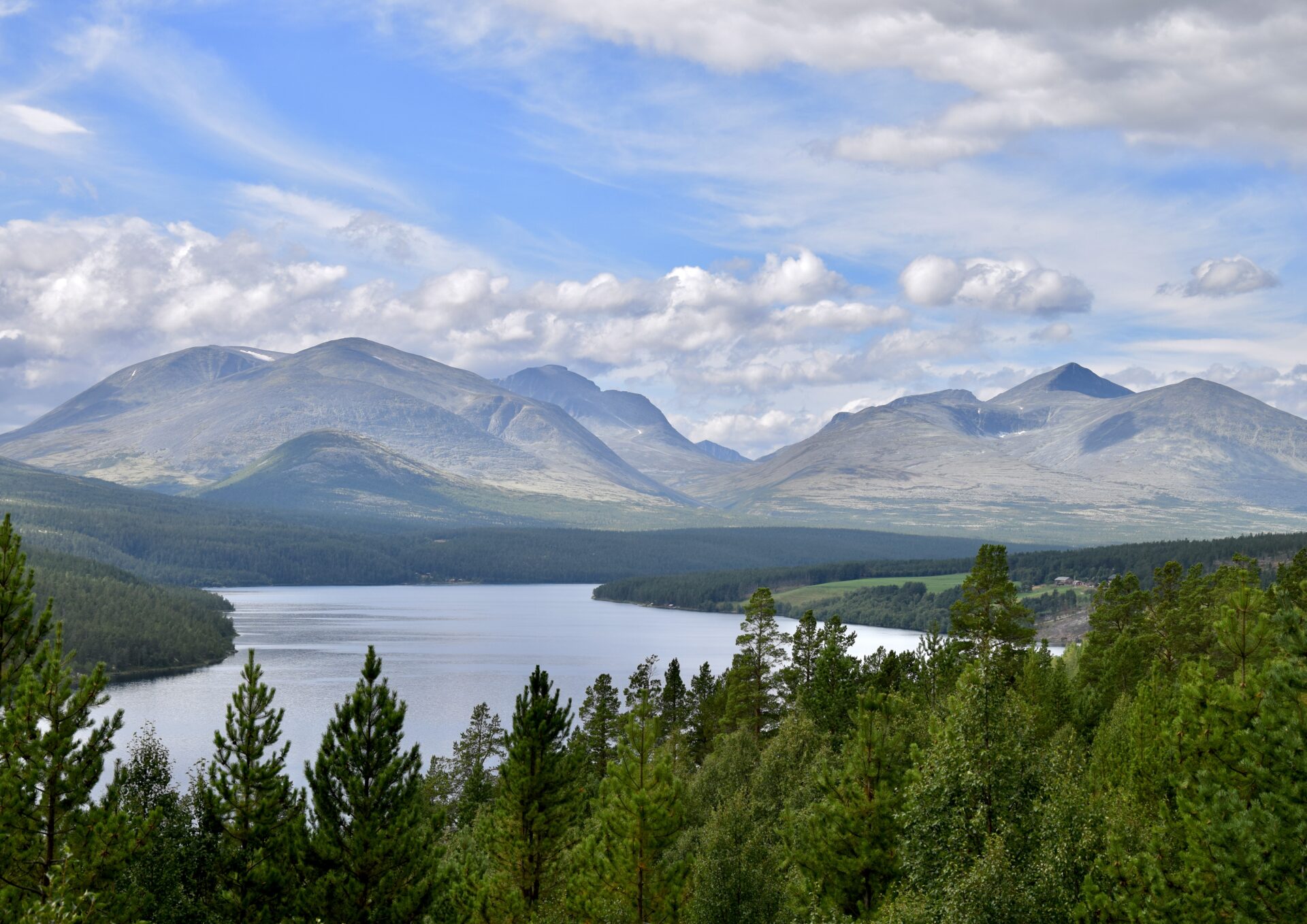
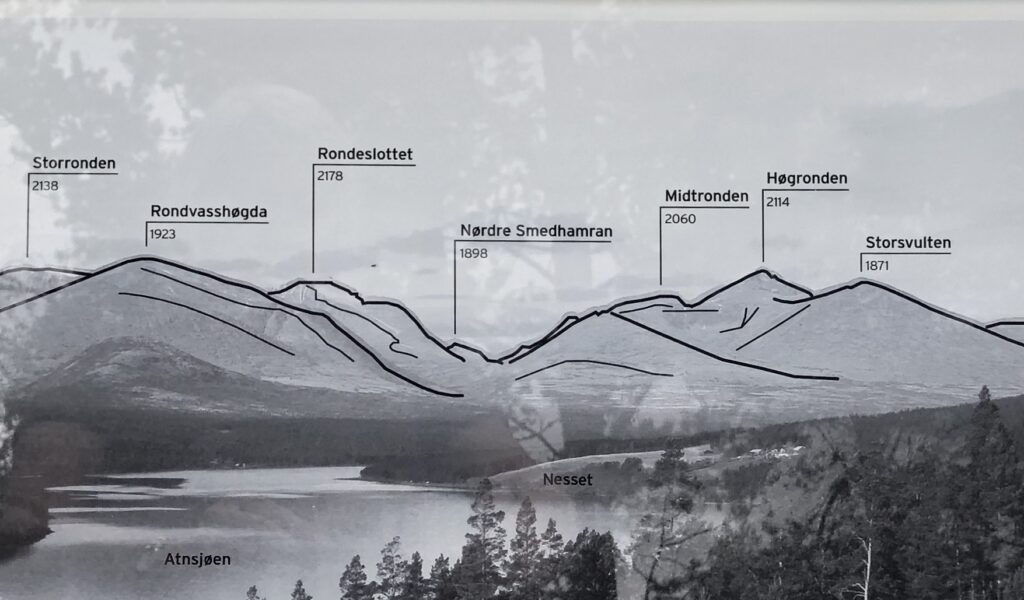
Nice drive through the Atndalen, with the mountains in the west. After passing the lake, and about 9 km north of Sohlbergplassen, I came to another new and interesting rest area and viewpoint.
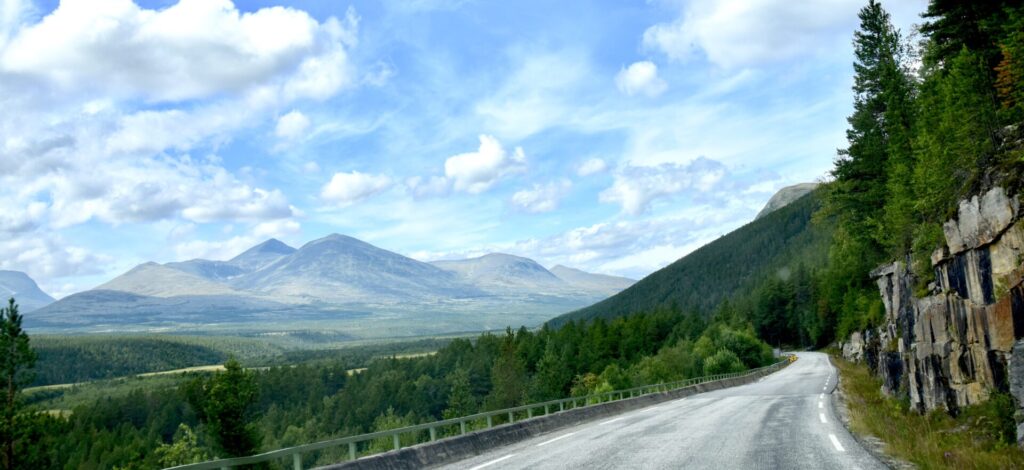
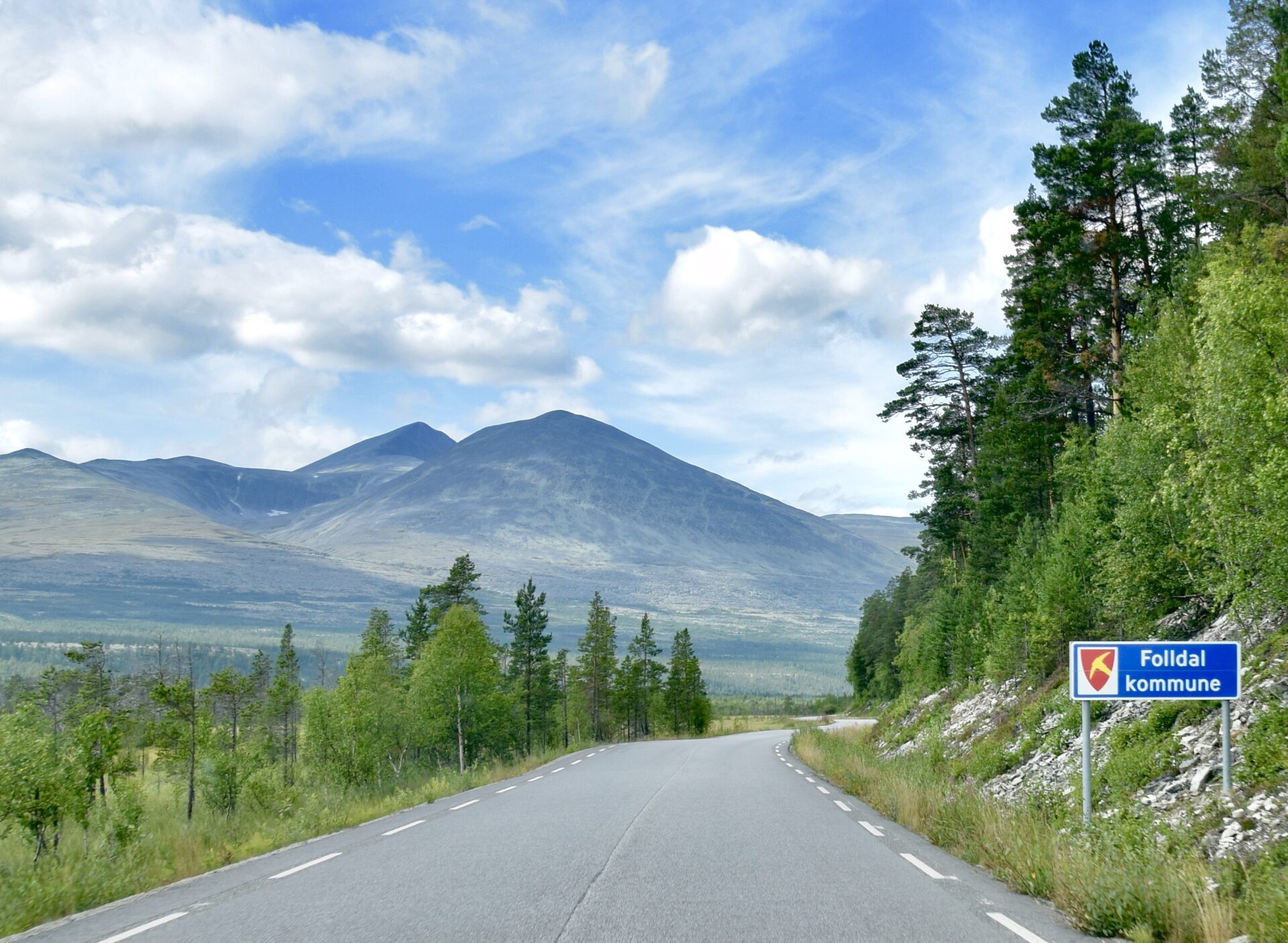
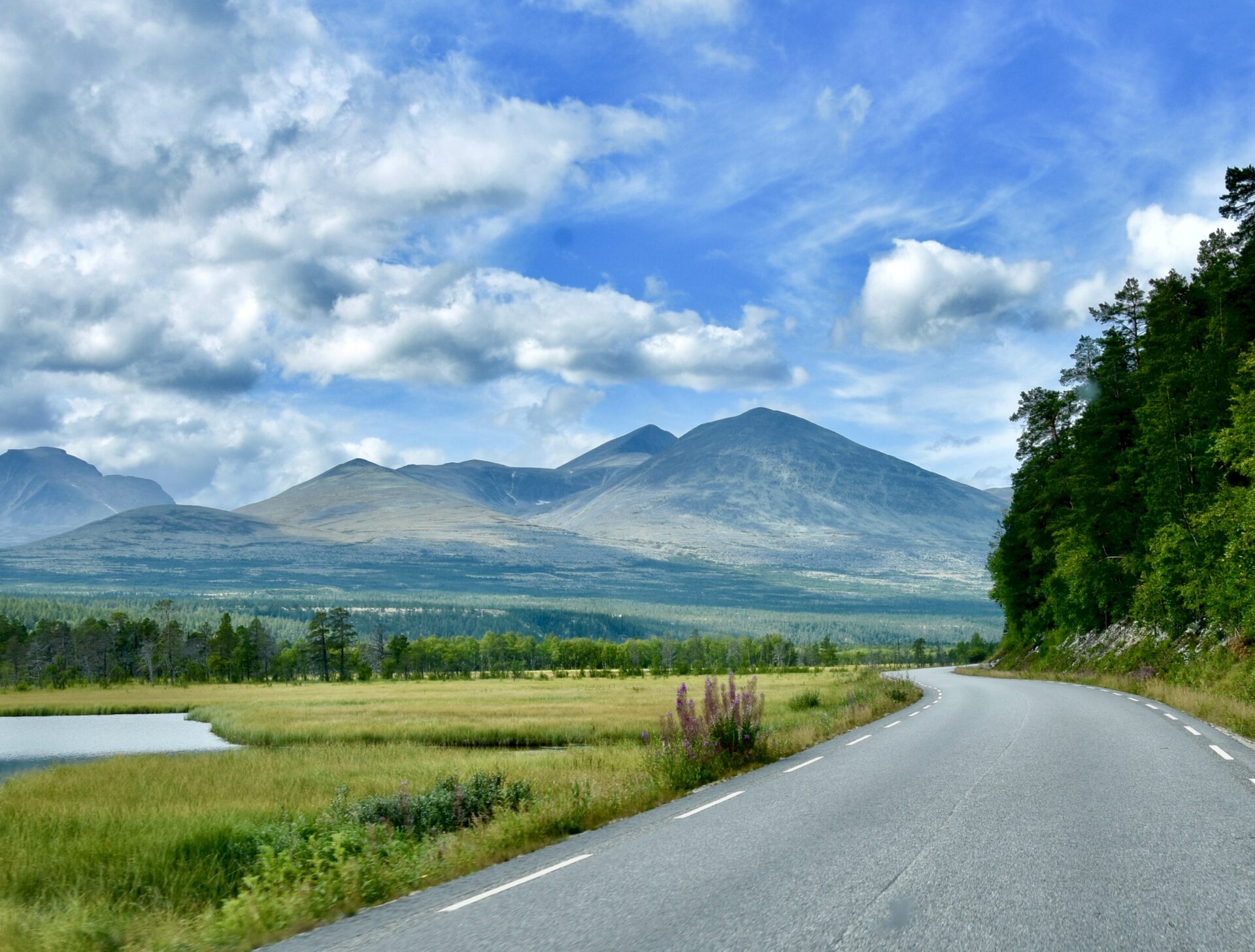
STRØMBU REST AREA AND VIEW POINT
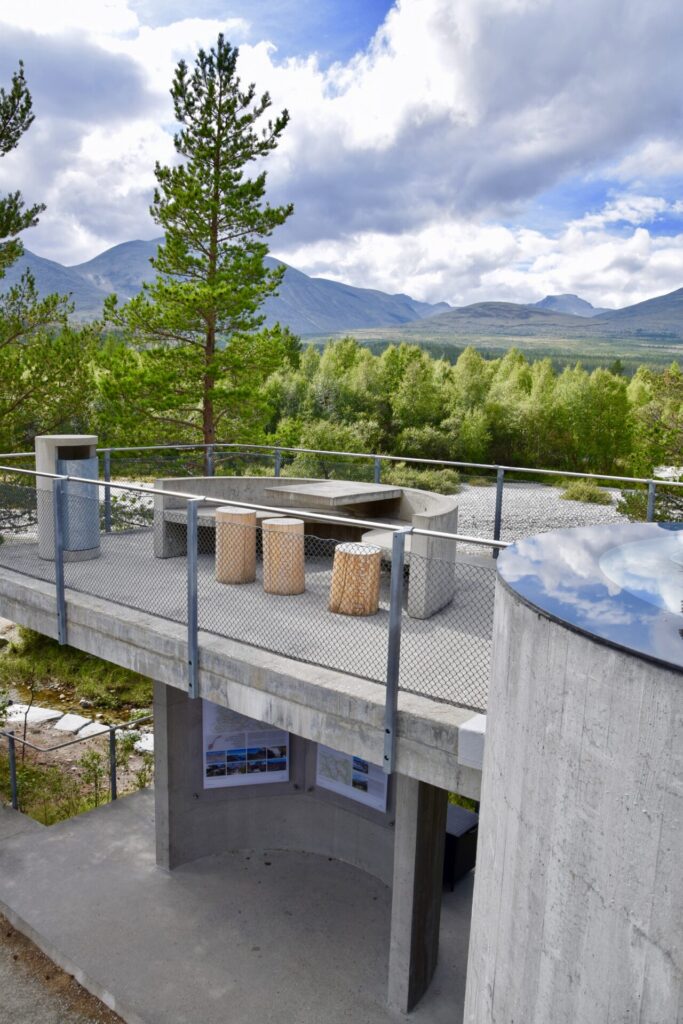
Close to Atna river – is Strømbu – a rest area with a staffed kiosk that also serves as an information centre during the tourist season. The main building encompasses an outdoor as well as an indoor area. From the car park, stairs lead up to the roof terrace with a great view of the mountains and the river.
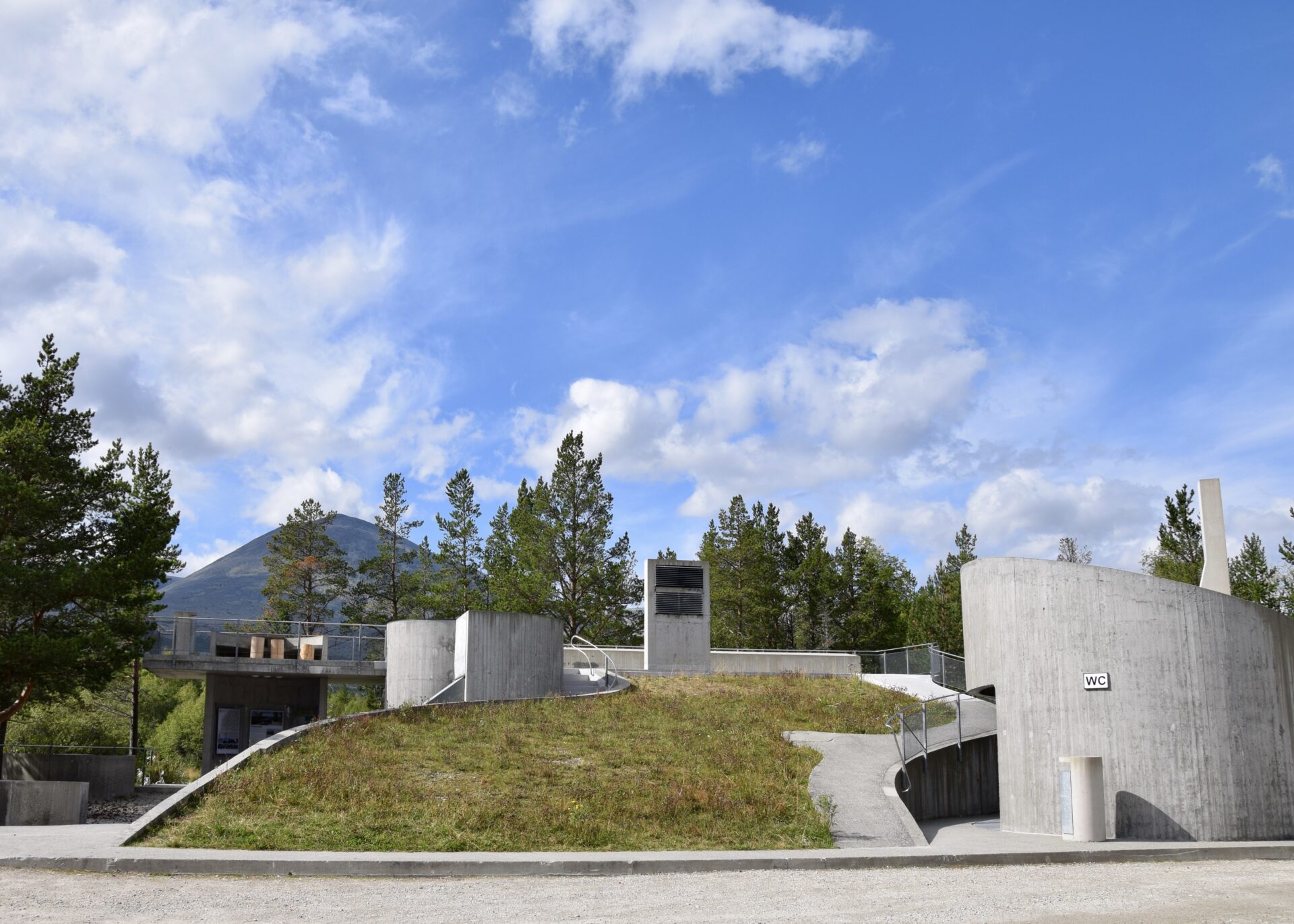
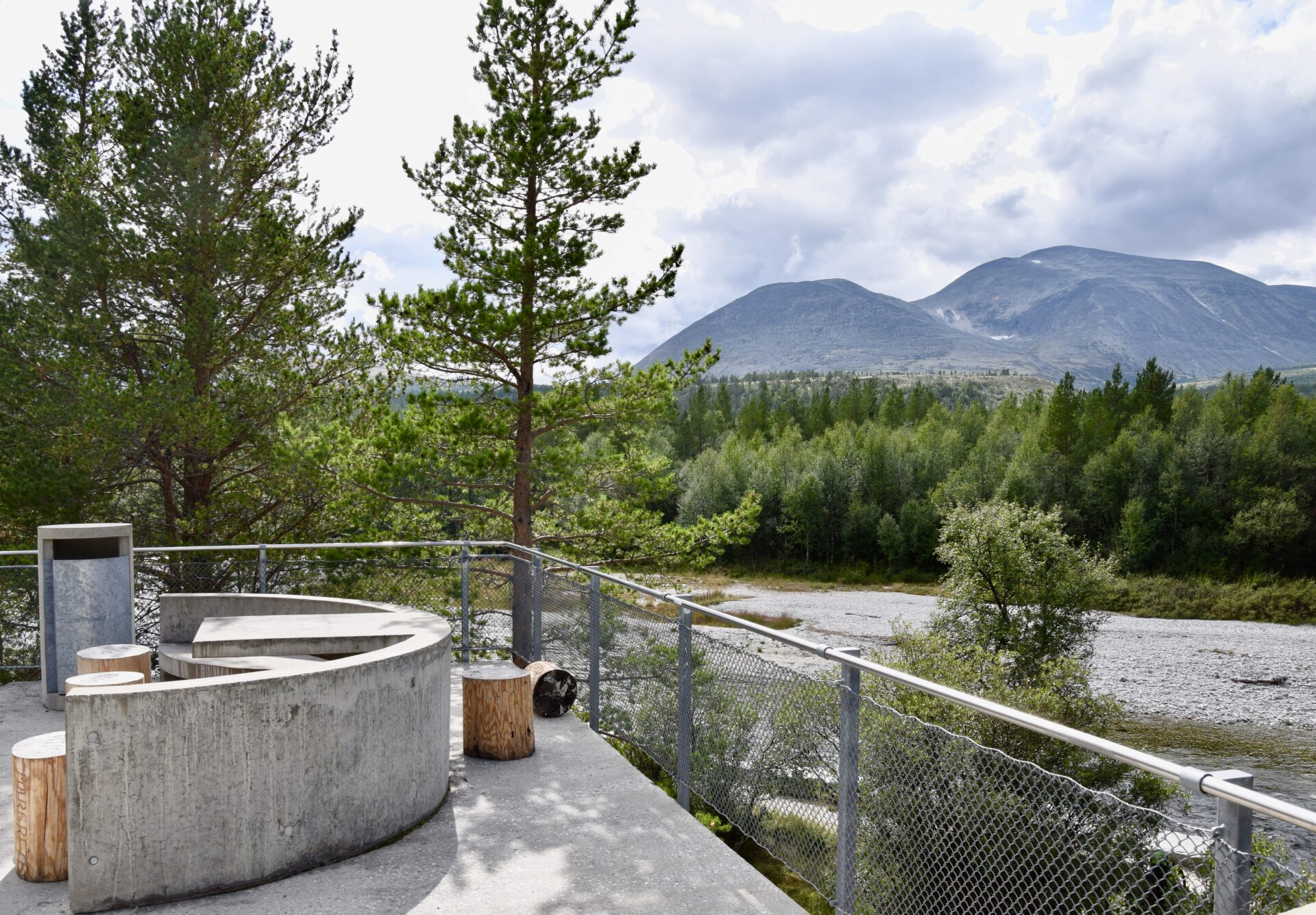
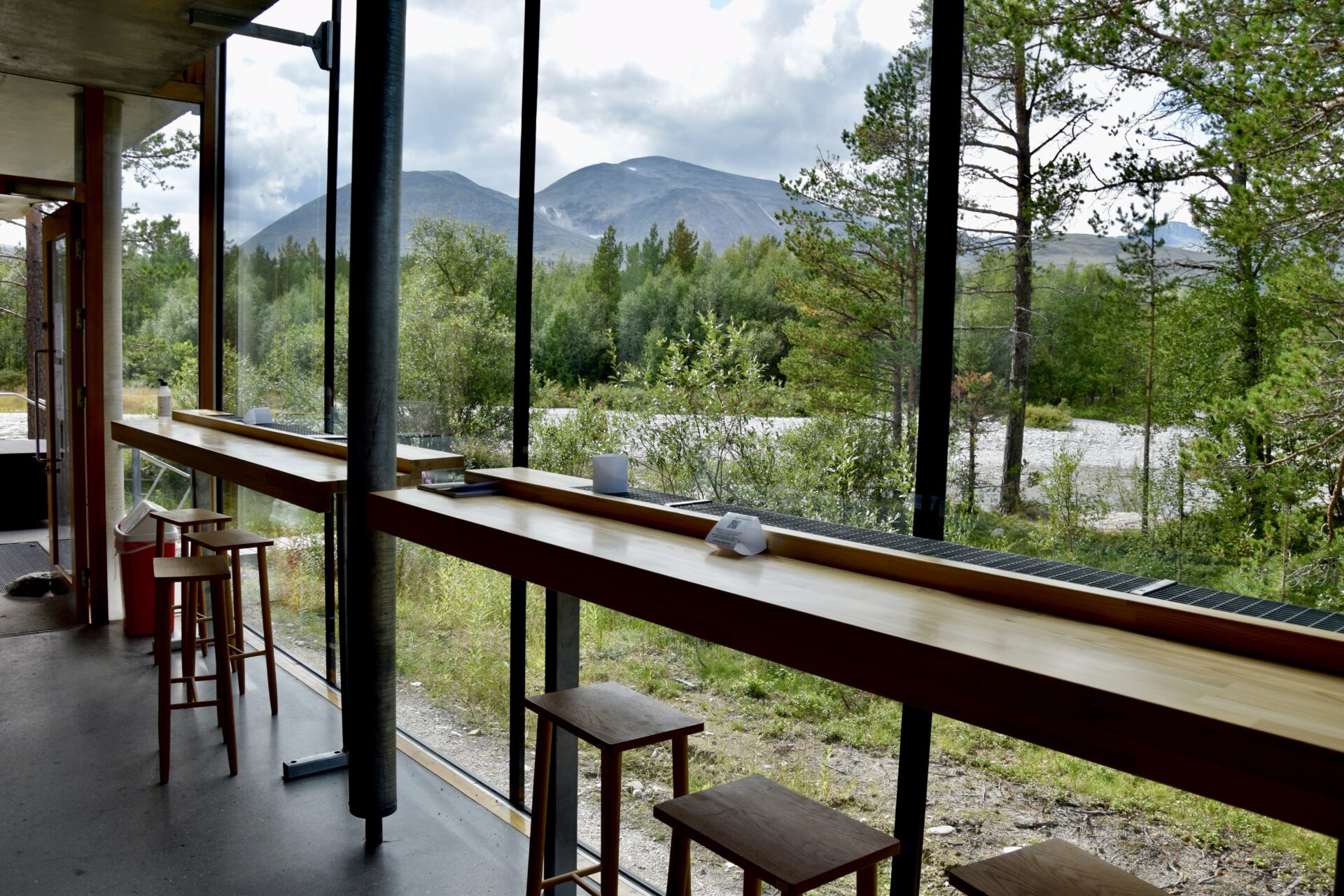
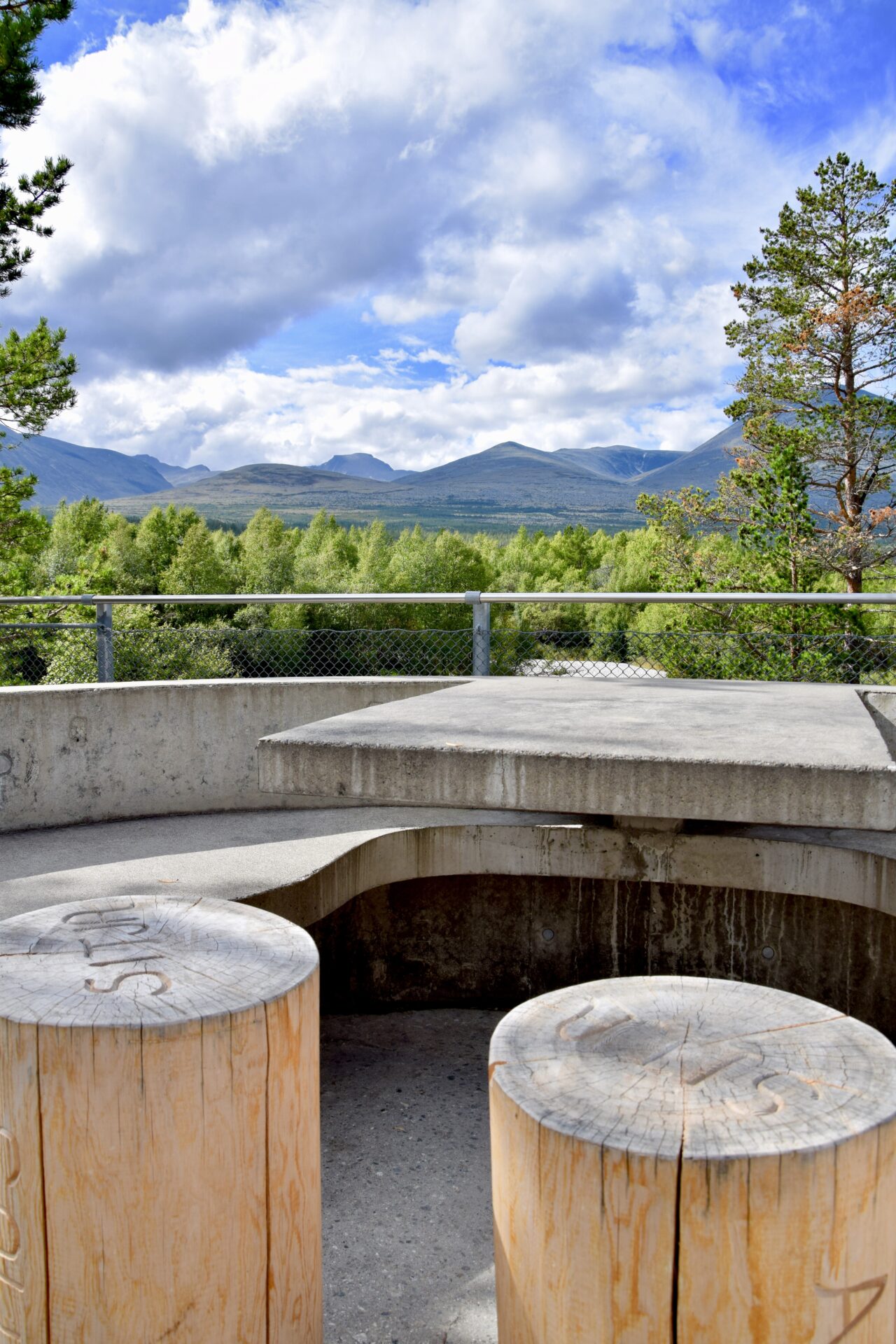
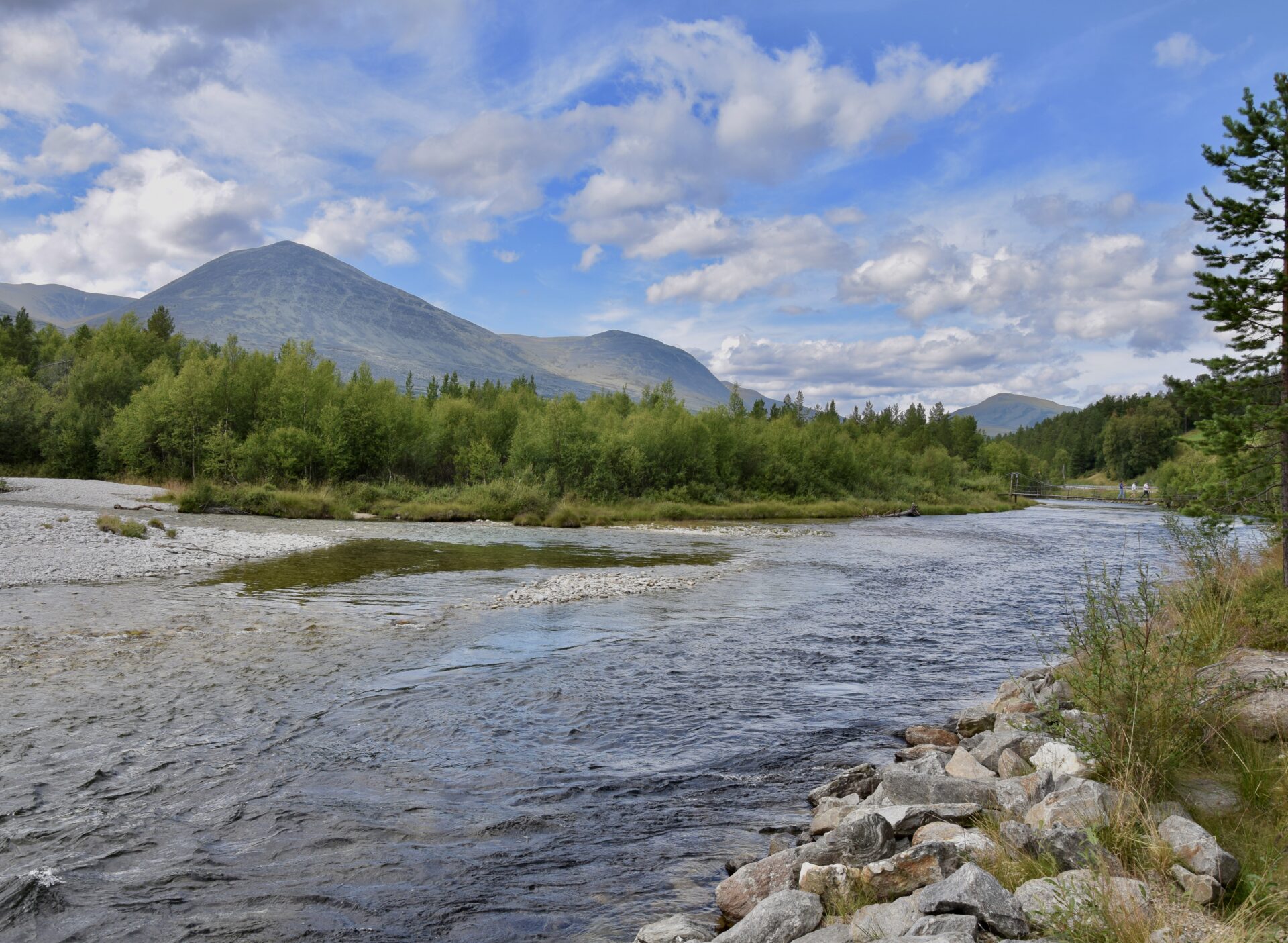
Strømbu rest area caters for the interests of hikers as well as motorists.
Strømbu is one of the main gateways to Rondane from the east and a good starting point for walks in Norway’s first national park.
Walking time to Bjørnhollia tourist cabin in Rondane is approx. 2 hours and to Rondvassbu 6 hours. To Breisjøseter tourist cabin in the east, there are approx. 9 hours to walk.
There are also three short walks from Strømbru.
The rest area has a roof terrace and a lounge directly adjacent to the river Atna that winds between pine trees and sandbanks. Here you can admire the view of the mountains and the river. Inside you will find tourist information, kiosk, local baking and crafts. The service facilities are placed in a separate building.
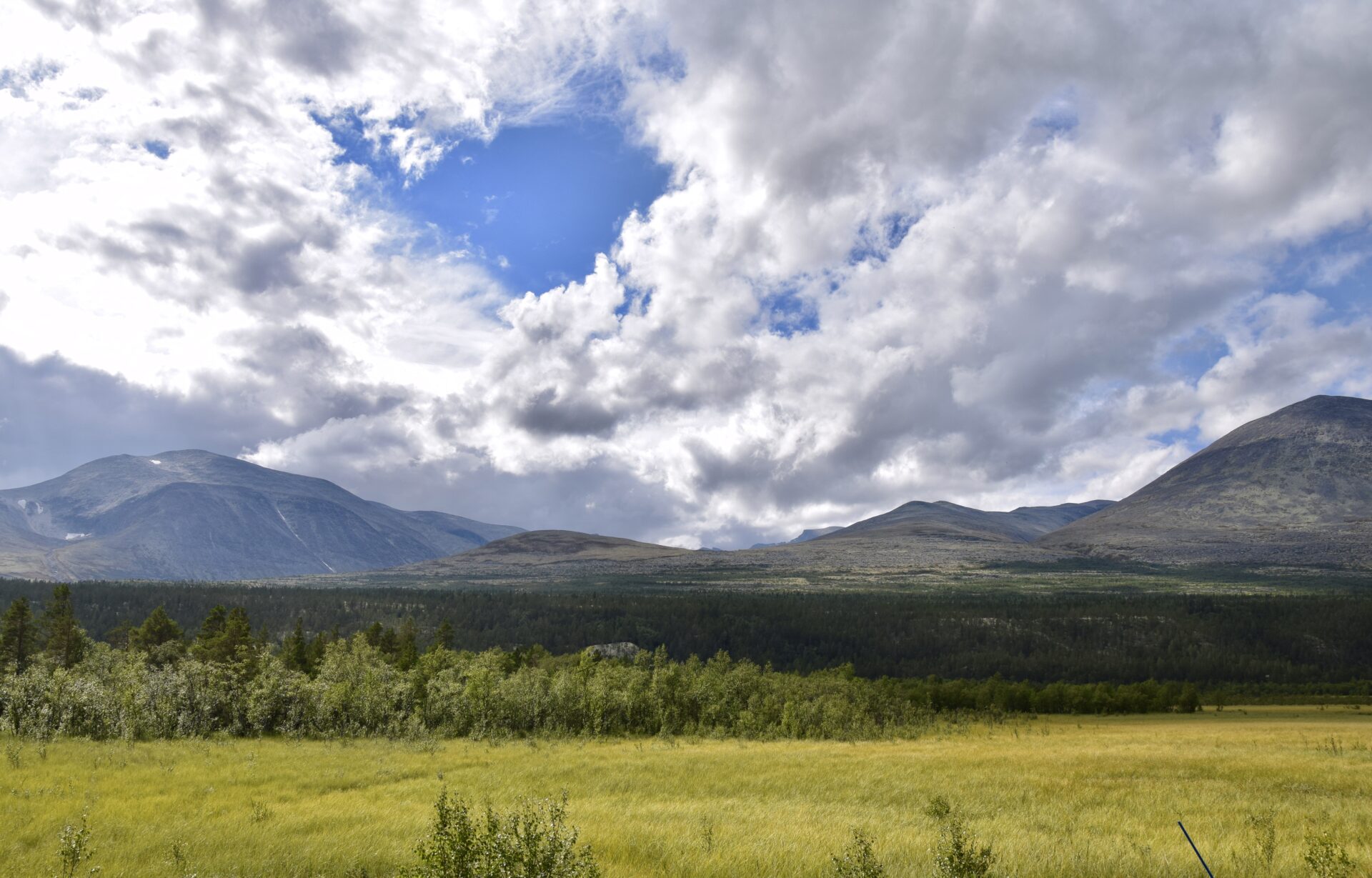
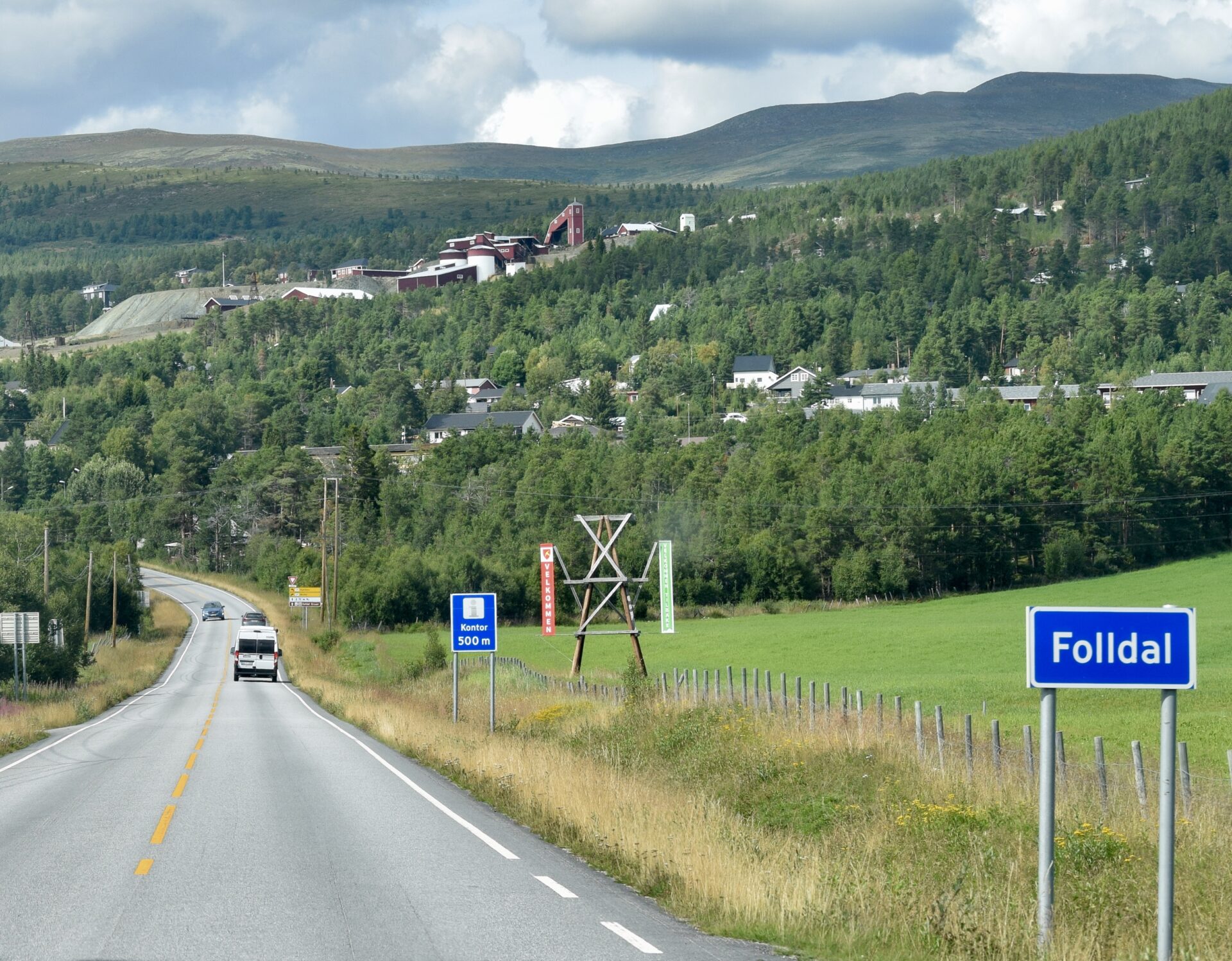
Folldal – north of the road Fv27, makes the end of this scenic route.
In the background of the image above, you can see the Folldal Mines which are one of Norway’s foremost technical and industrial heritage sites. It consists of approximately 70 well-preserved buildings. Today, it is a vibrant museum with exhibitions, way-marked trails, café, accommodation and the main attraction – the mine
The mines were in operation from 1748 to 1993, producing copper, zinc and sulphur. Barracks for the workers and the director’s mansion containing the luxuries of the era bear witness to the class distinctions that characterised this mining community. Below the mining installations, there is a car park with an information board and a viewing point.
More Norwegian Scenic Routes at:

